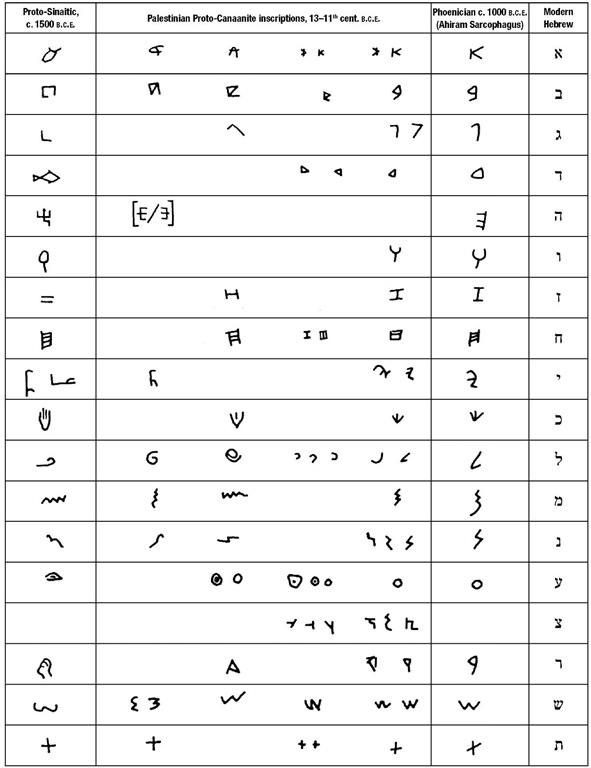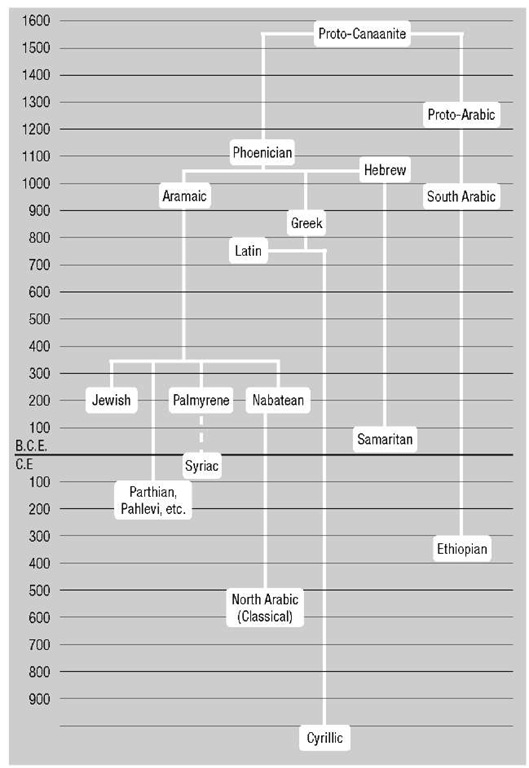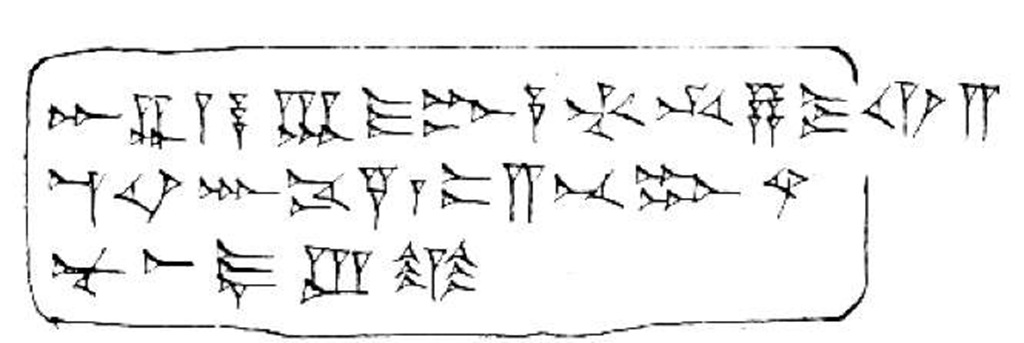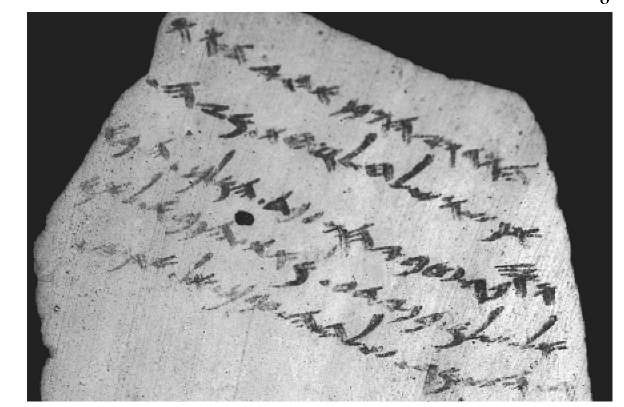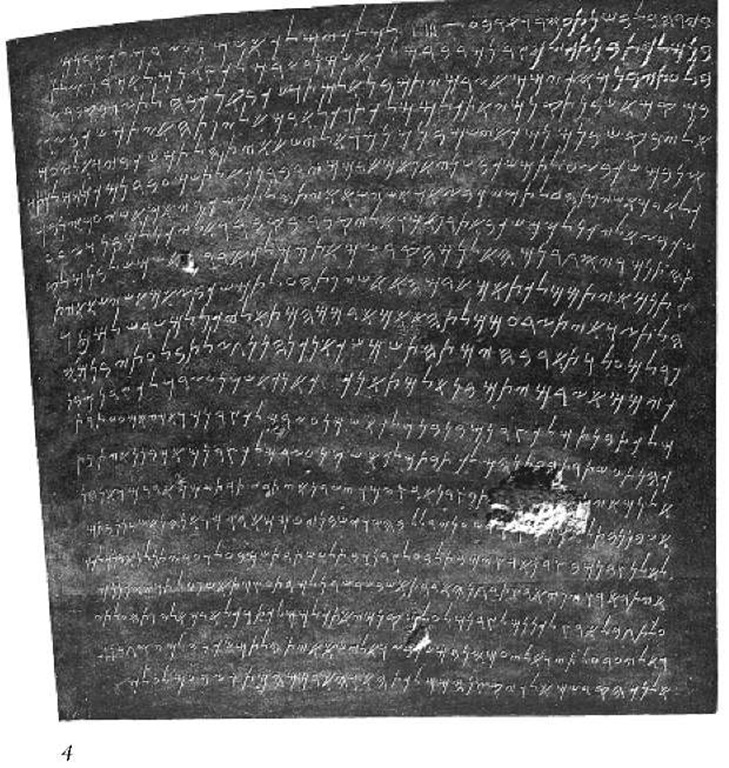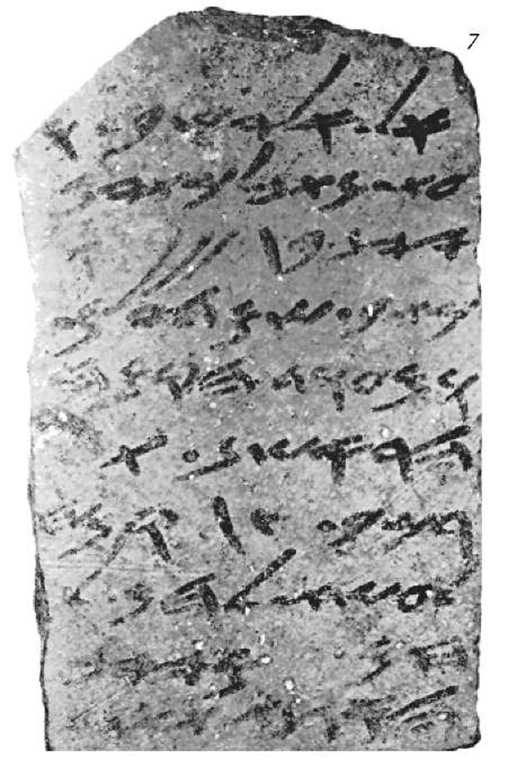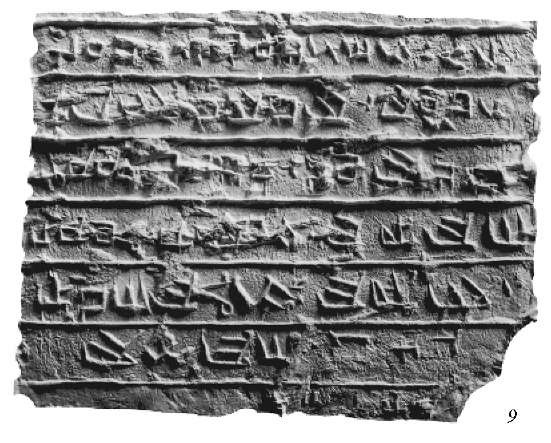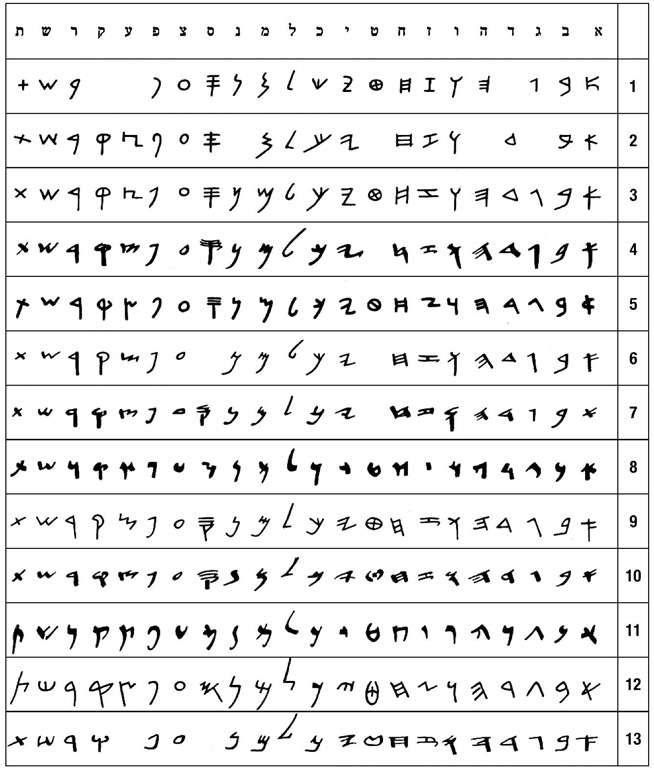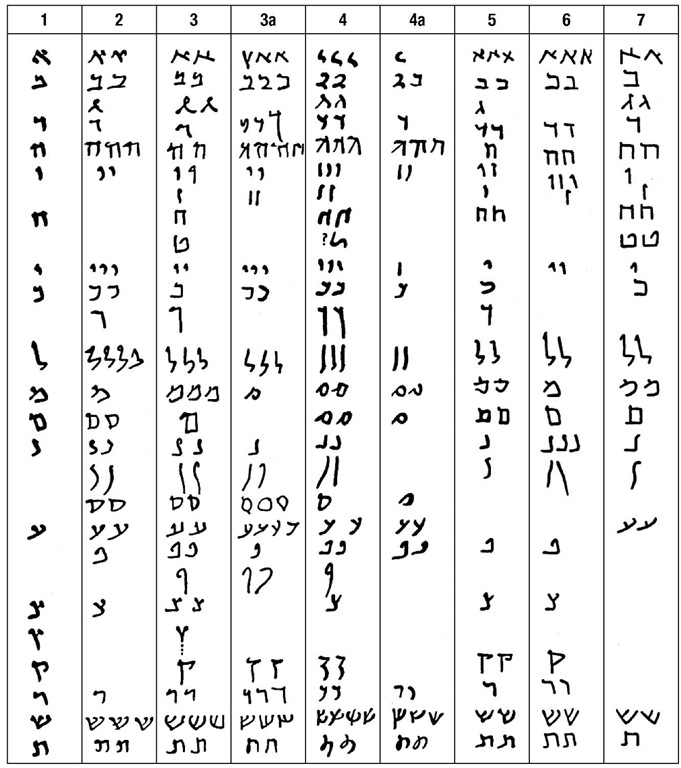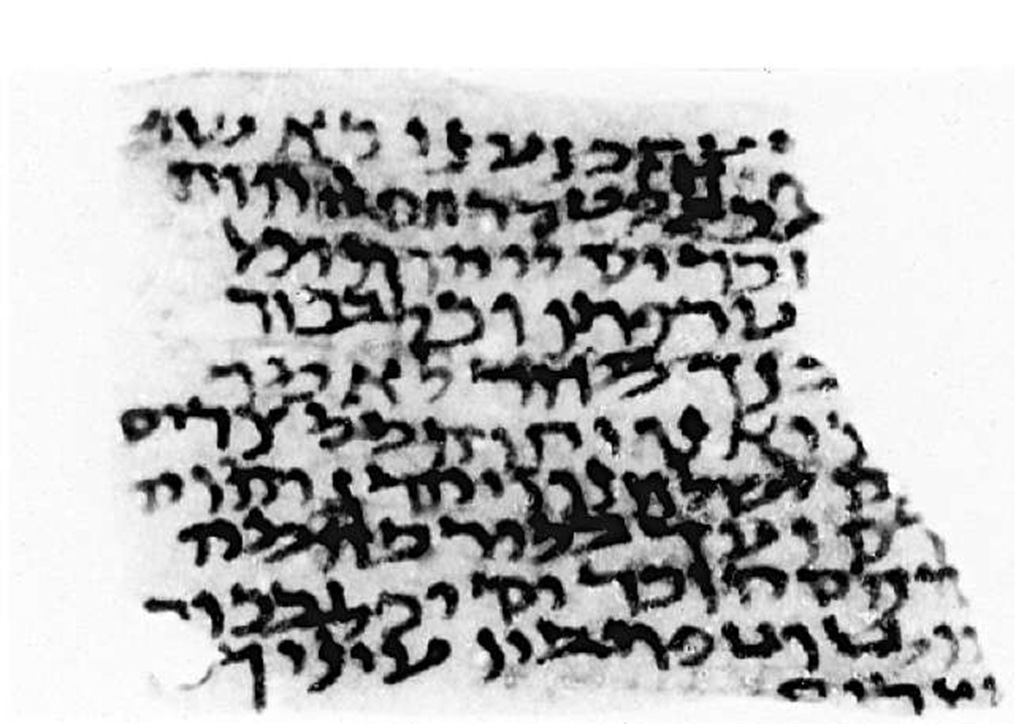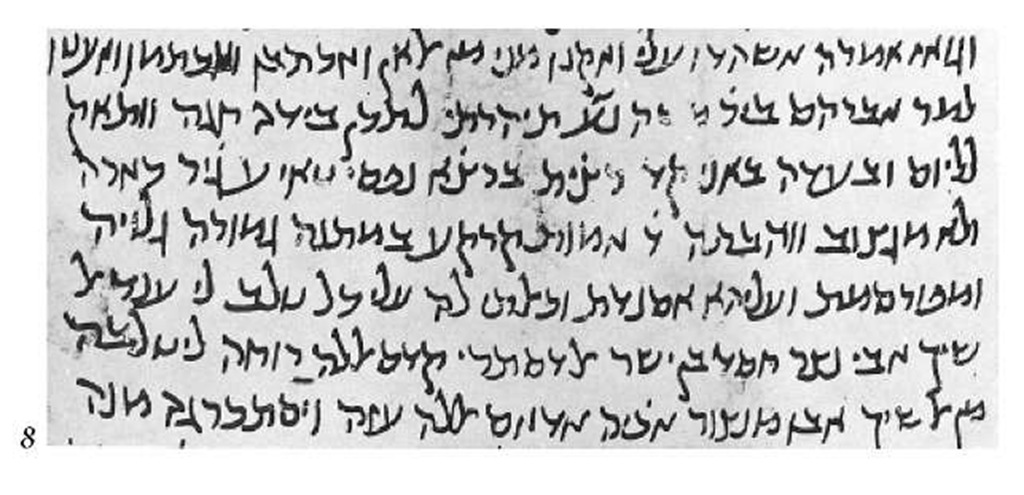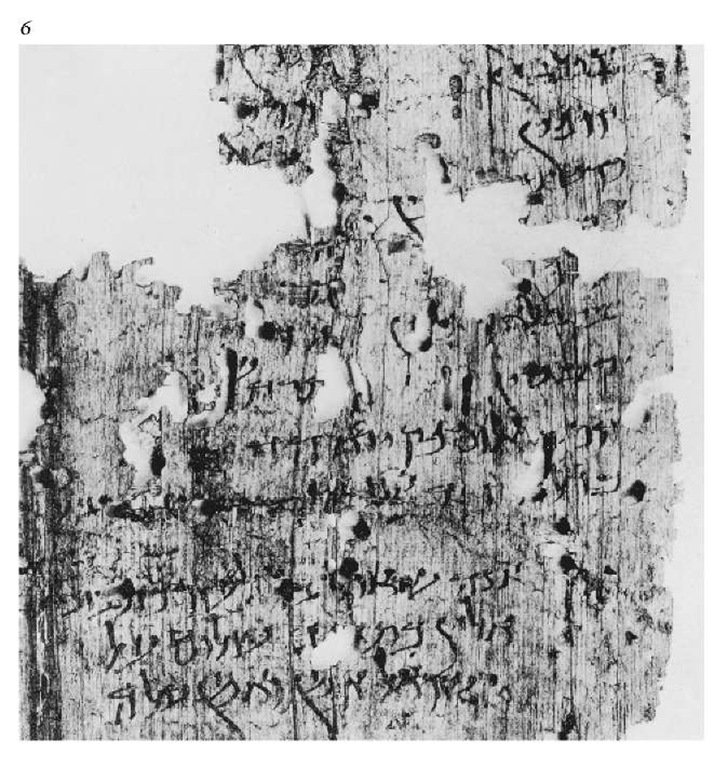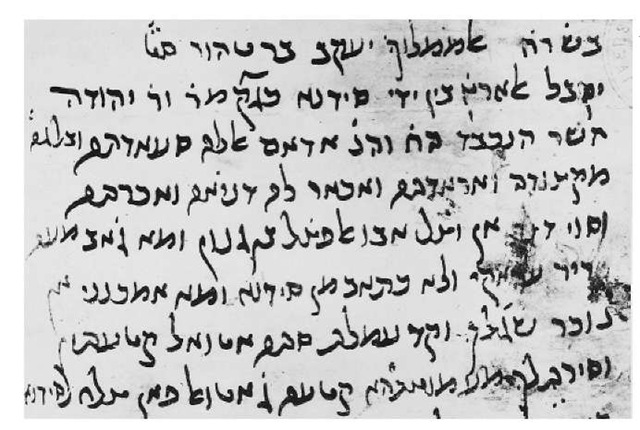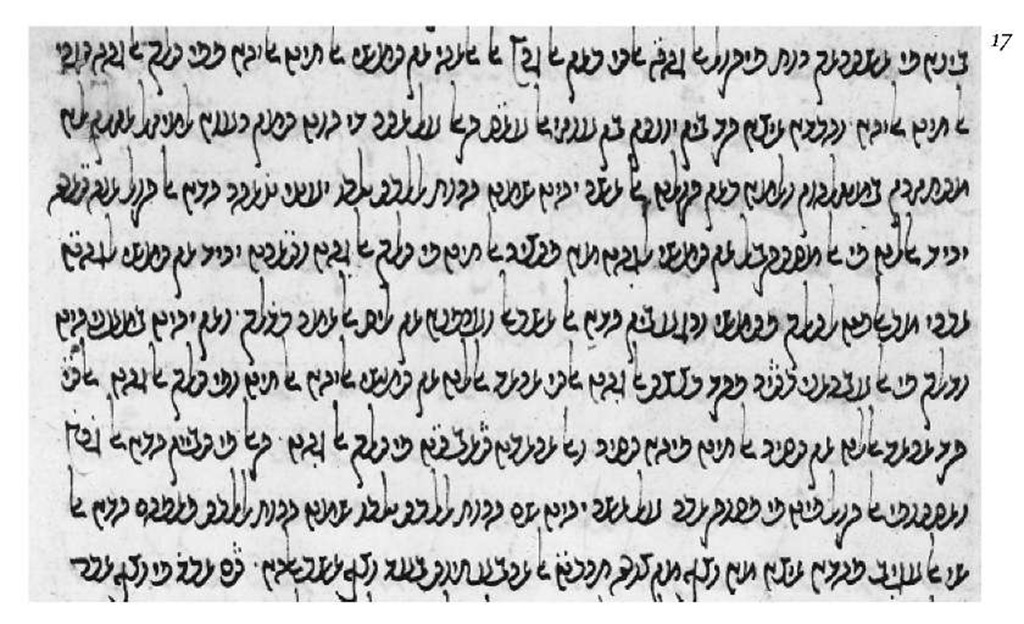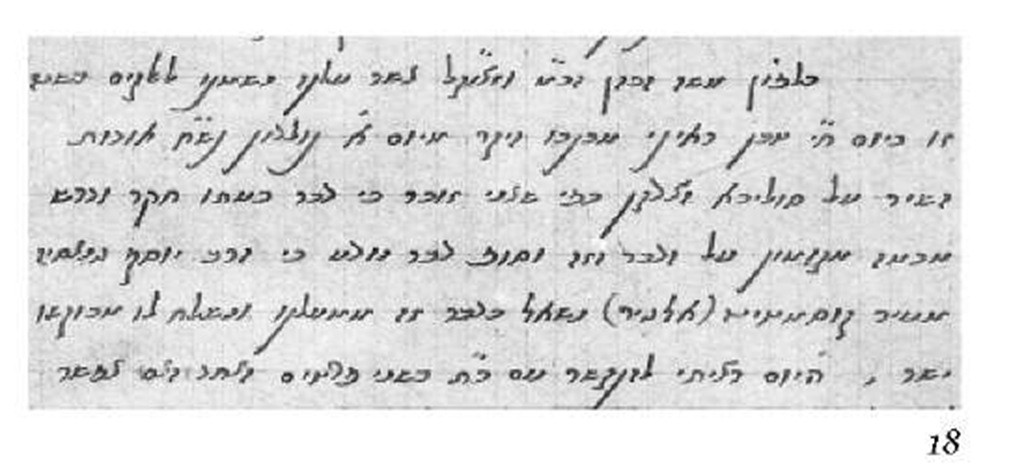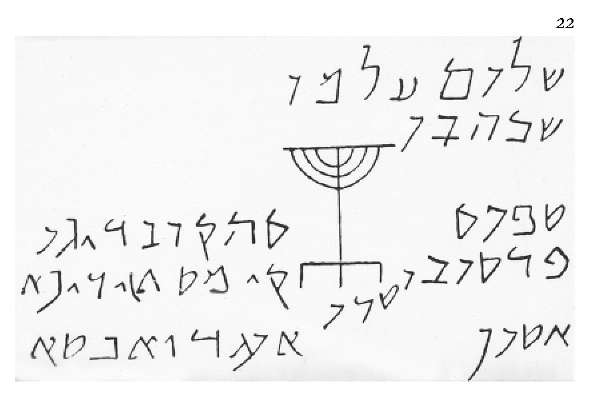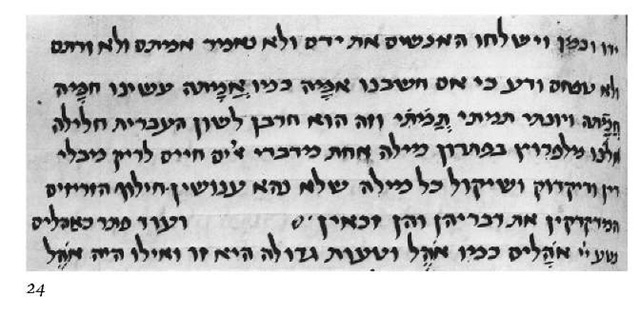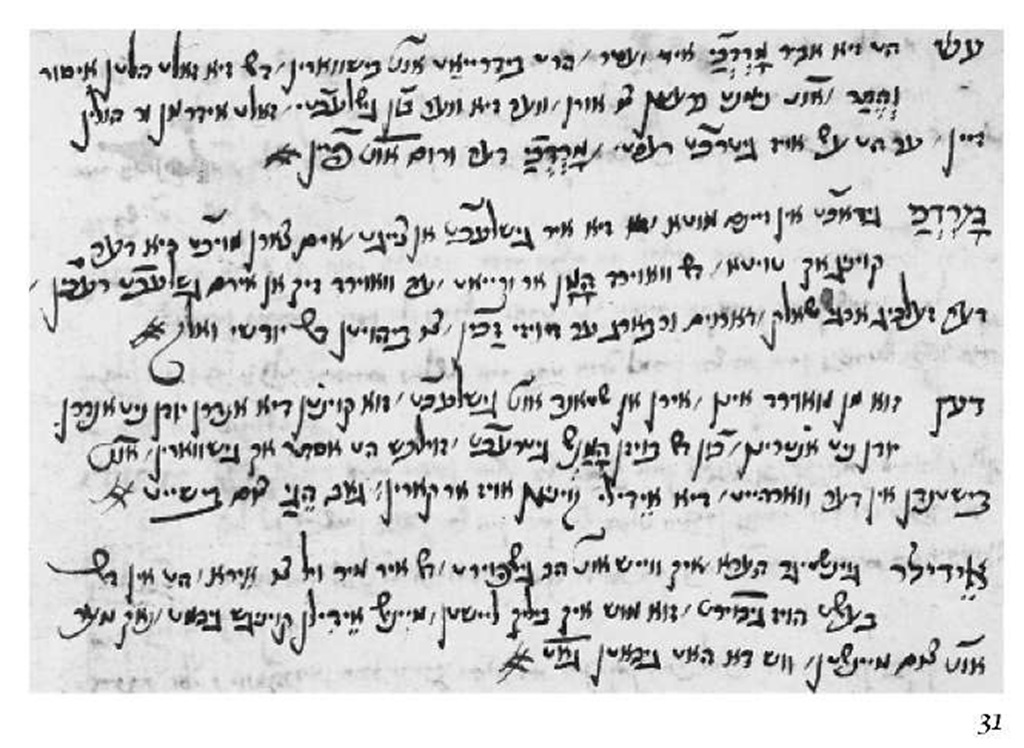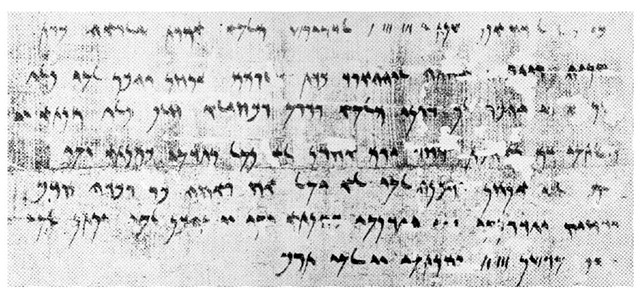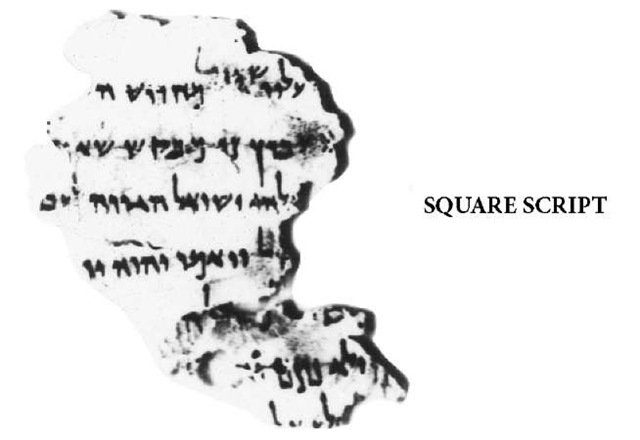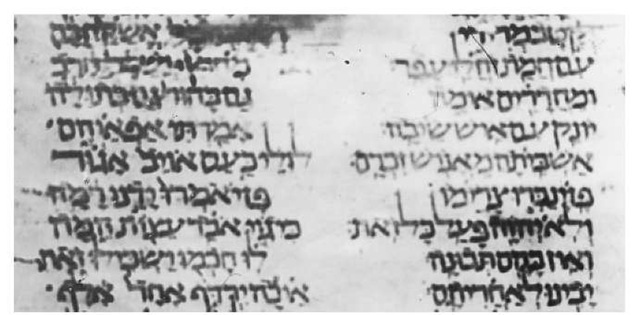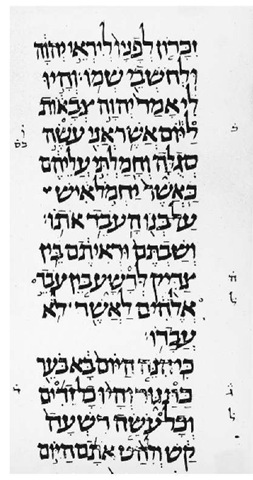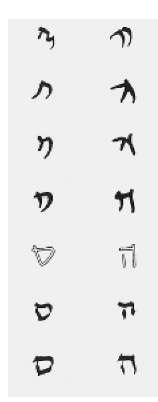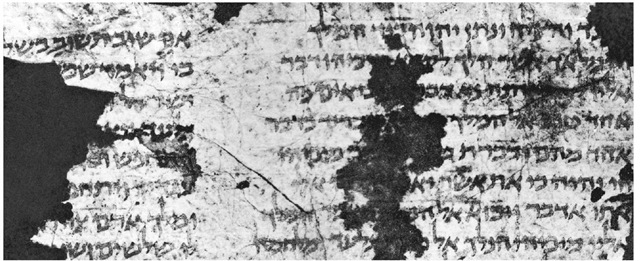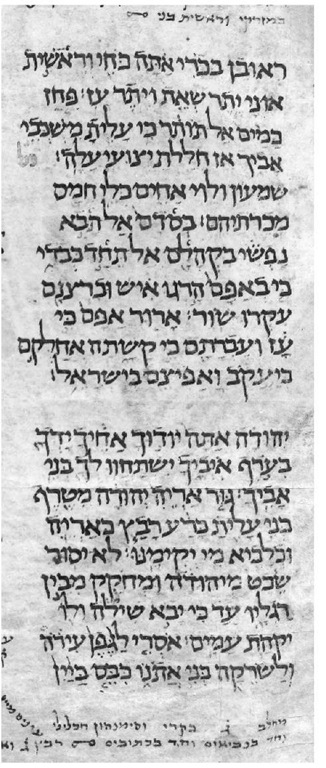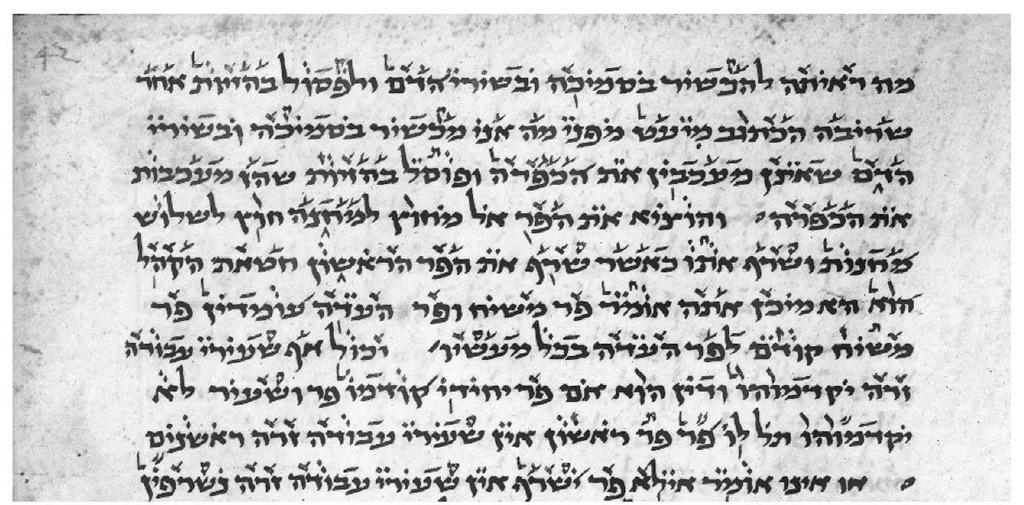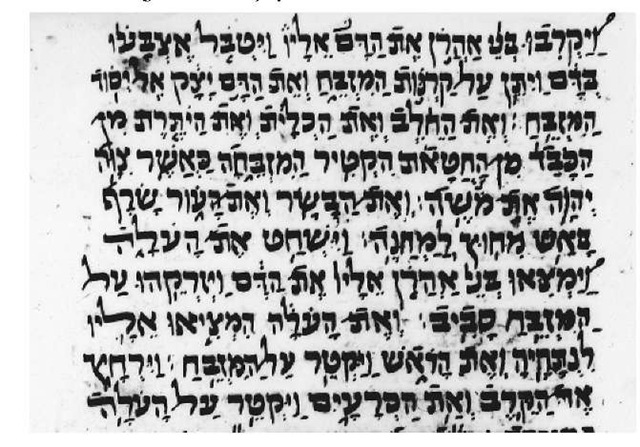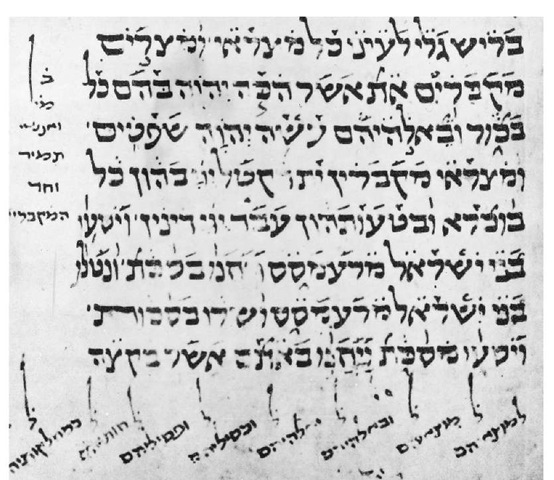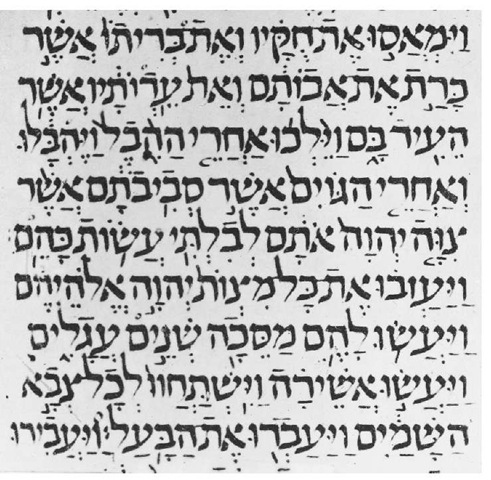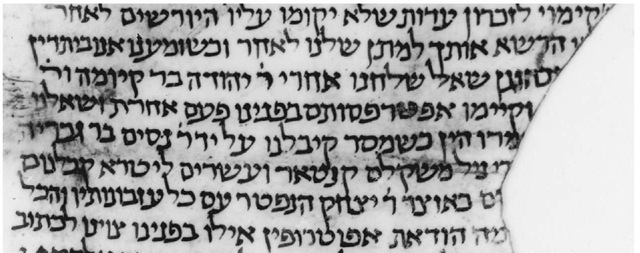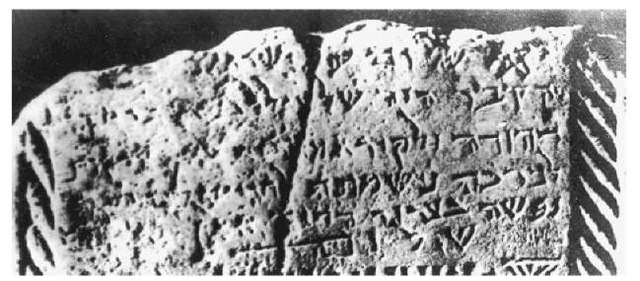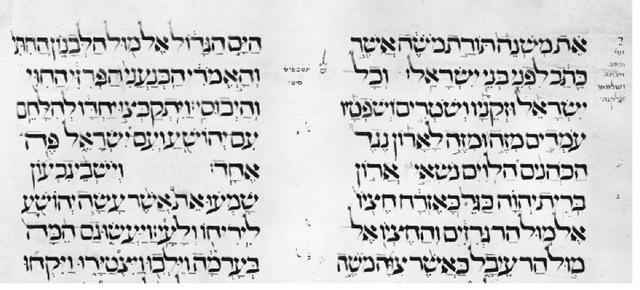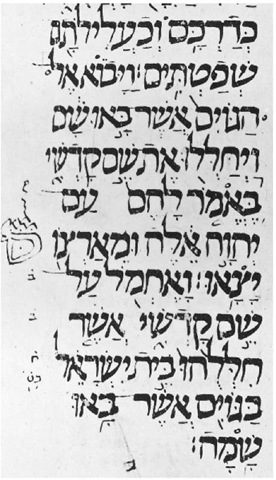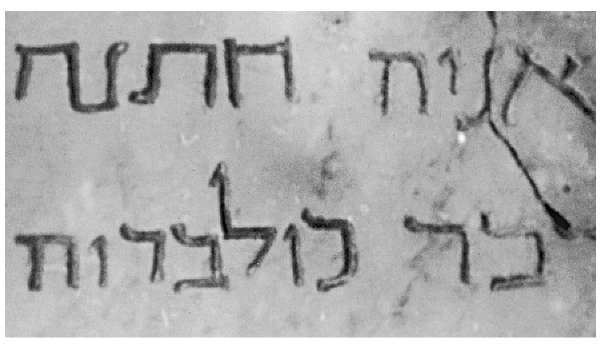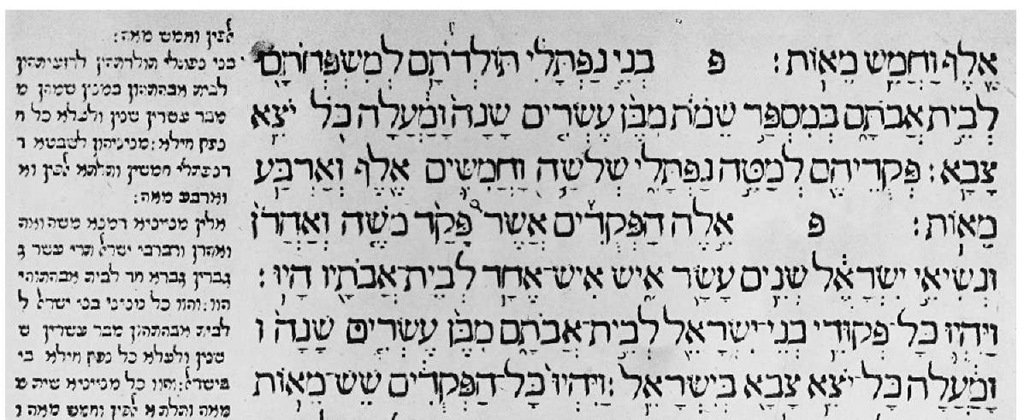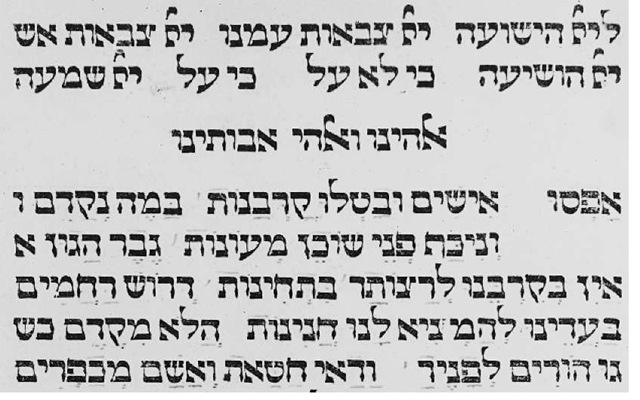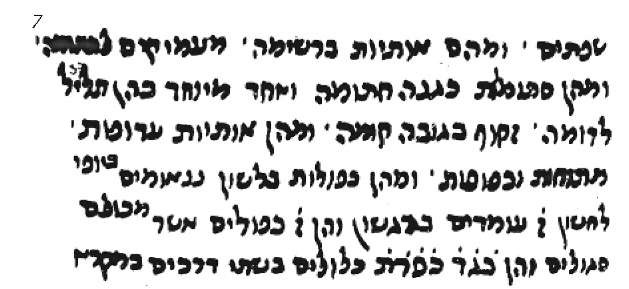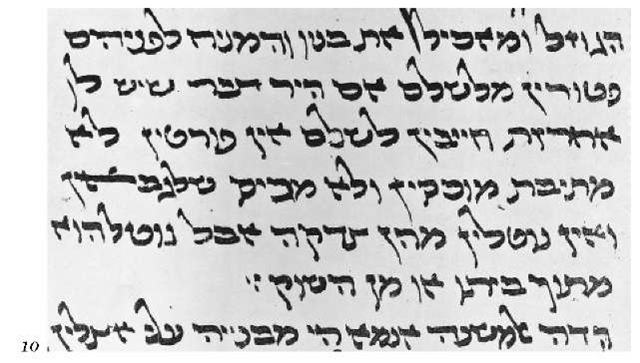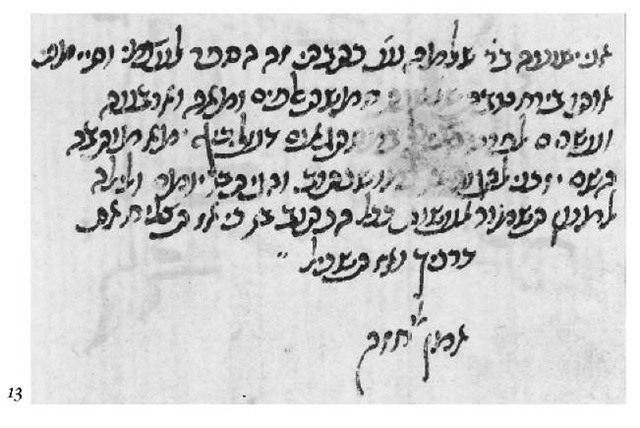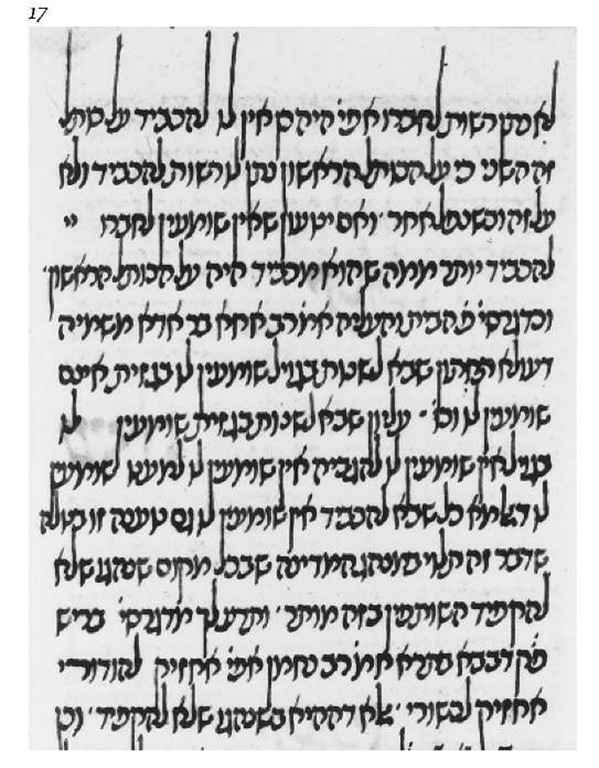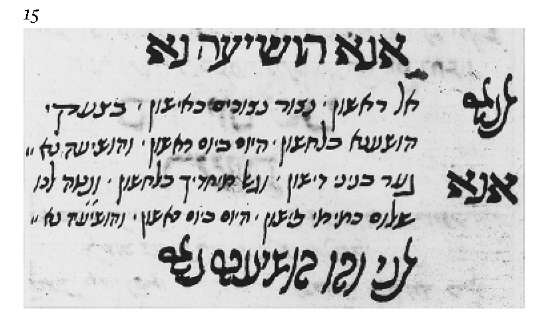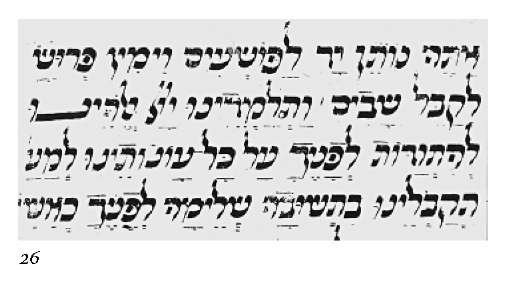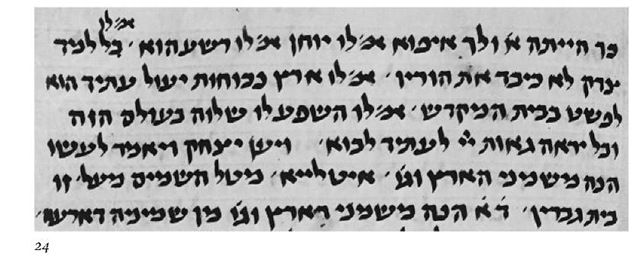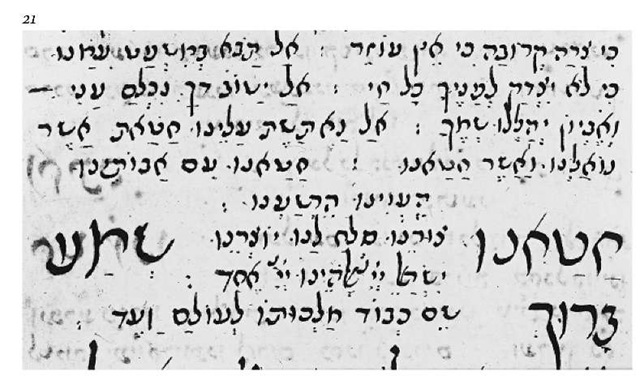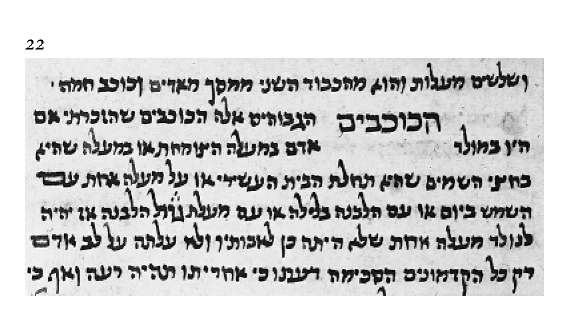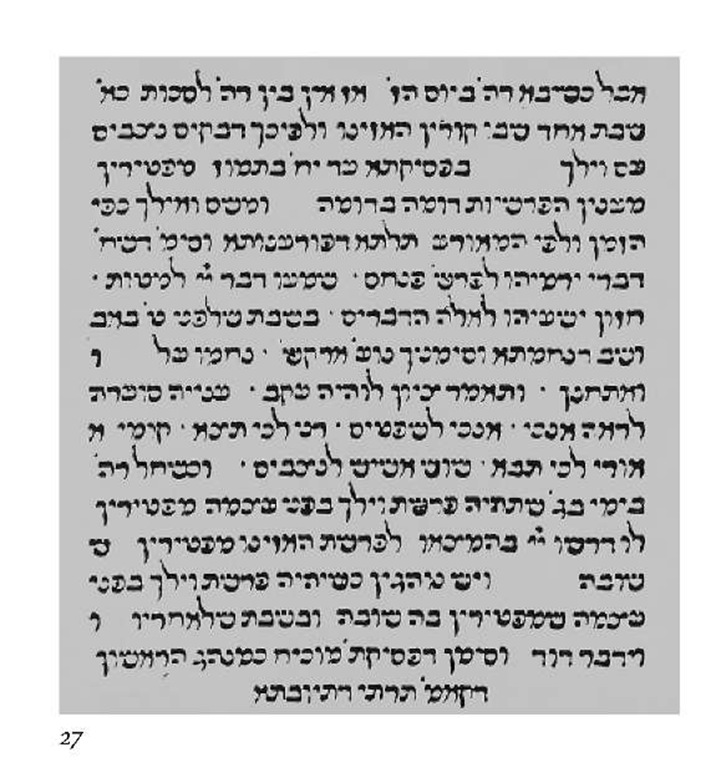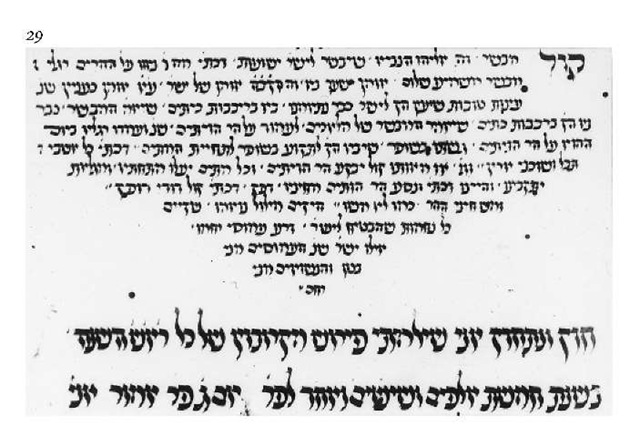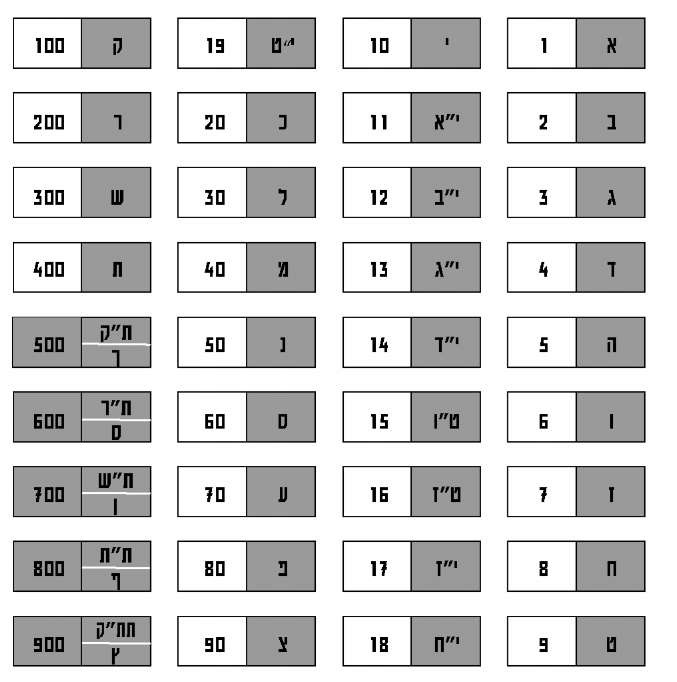ALNAKAR, ABRAHAM BEN JOSEPH
(1740?-after 1803), Sephardi liturgical scholar. Alnakar was born and brought up in Fez. From there he went to Algiers but returned to Fez by 1783, in which year he began to travel extensively. He was in Tlemcen in 1783, in Tunis in 1785, in Melian, in Tripoli the following year, and again in Tunis in 1788. From there he proceeded to Leghorn where he remained until his death. For a number of years he engaged in publishing. In 1789, he went into partnership with Jacob Benaim of Morocco and they published, at their own expense, Tikkunei ha-Zohar. They used the Constantinople edition of 1719 including the glosses of Jacob Vilna and Moses Zacuto. Alnakar added an introduction to the book, and songs of his own, which he printed in the book. The partnership was probably unsuccessful, since in 1791 his partner, together with H ayyim Abraham Israel Ze’evi, a Jerusalem emissary, published the Zohar with the glosses of H .J.D. *Azulai. Alnakar turned to the publication of prayer books. He became friendly with Azulai, receiving glosses to the festival prayers. In 1798 he published a prayer book for the New Year and the Day of Atonement, with his own commentary, Zekhor le-Avraham. This commentary appeared in almost every edition of the High Holy Day liturgy published in Leghorn, as well as in the Tripoli festival prayer book. In addition he published a small prayer book for the New Year and the Day of Atonement according to the rite of Argil (Leghorn, 1803). In the same year he published festival prayer books according to the rites of the Sephardim of Tunis and of Tlemcen. His Afra de-Avraham has remained in manuscript. He also drew a design of the Temple candelabrum with a kabbalistic commentary, of which he published a lithographic edition.
AL-NAKAWA, ISRAEL BEN JOSEPH
(d. 1391), ethical writer and poet. The Al-Nakawa family had lived from the 12th century in Toledo where a synagogue (Midrash Ben Al-Nakawa) had been established by Israel’s uncle, Abraham b. Samuel (murdered in 1341). Israel studied with *Asher b. Jehiel and his son Jacob. During the attack on the Jewish community of Toledo in 1391, which claimed many victims and even more converts, the aged Israel was savagely attacked and dragged through the streets. He finally killed himself, an example followed by his brother Solomon. The harrowing details are described in a dirge by an otherwise unknown poet, Jacob ibn Al-bene. According to one interpretation of this poem, Israel was the hazzan of a Toledo congregation. His son Ephraim escaped to North Africa and became spiritual leader of the Tlemcen Jewish community.The author attributes the inspiration and name of his work to a vision (as other authors had before and after him) of the seven-branched holy candelabrum (cf. Zech. 4) and a scroll (cf. Ezek. 2:9-3:3), in which he was instructed to write a book with this title. Whatever the inspiration, the troubled times through which Spanish Jewry passed in the second half of the 14th century called for a handbook of ethical and ritual instruction such as the Menorat ha-Maor. After an introductory poem and an introduction in rhymed prose, the author describes the general need for a book such as his, in times of decline of religious knowledge and observance. The divisions of the book deal with the main themes of religious life: charity, prayer, repentance, humility, study of Torah, honor of parents, education of children, marriage, business morality, good manners, etc. Several supplements are appended to the work which, however, may not be by Al-Nakawa. The sources from which he drew his material include the whole range of rabbinic literature: the Talmud, the Midrashim, including some now lost, such as the Midrash Hashkem, the writings of the geonim, Maimonides, Nah manides, down to those of his teachers. Another work whose influence can be seen throughout the Menorat ha-Maor is that of Mitzvot Zemanniyyot by Israel b. Joseph. The Zohar is quoted under the otherwise unknown name of Midrash Tehi Or and in a Hebrew adaptation of the Aramaic original. It has been suggested that Israel was responsible for a Hebrew translation of the entire Zohar which was still current in the 16th century. The relationship between the Menorat ha-Maor and the Midrash ha-Gadol still needs investigation. In common with Isaac Aboab’s Menorat ha-Maor (1514), Al-Nakawa’s is of primary importance because of the texts, both extant and lost, quoted by the author. The originality of such a work lies in the arrangement of the material, in its emphases as well as in the "continuity" provided by the compiler. While Aboab’s Menorat ha-Maor soon became one of the most studied and most often reprinted religious works, Al-Nakawa’s remained relatively unknown. Though copies were current in Spain in the 14th and 15th centuries, only one complete manuscript has survived (Oxford, Bodleian Library, Ms. Opp. 146) which H.G. Enelow published in a monumental edition (4 vols., published 1929-32). The last topic of the Menorat ha-Maor (on good manners) found its way into J.C. Wagenseil’s Belehrung der Juedisch-Teutschen Red- und Schreibart (Koe-nigsberg, 1699), from a Judeo-German translation by Isaac b. Eliakim of Posen (Prague, 1620). Jacob Emden included the same topic in the third part of his prayer book, Migdal Oz (Altona, 1748). The relations between Al-Nakawa’s and Isaac Aboab’s Menorat ha-Maor have been much discussed and it is generally assumed that Aboab used, adapted, and condensed Al-Nakawa. However, there can be no absolute certainty in the matter. The main differences are that Aboab’s work is purely aggadic and more speculative, and that its structure is more logical; that it has practically no Zohar quotations and that many talmudic passages are quoted in the Aramaic original, whereas Al-Nakawa mostly translates them into Hebrew. Israel Al-Nakawa was renowned as a poet and as such is mourned by the writer of the elegy mentioned above. Davidson’s Ozar ha-Shirah ve-ha-Piyyut includes 16 of his compositions. Two piyyutim, with Al-Nakawa’s acrostic, were published by Enelow (Menorat ha-Maor, 2:439-43) from a manuscript.
ALONI, NISSIM
(1926-1998), Israeli writer and playwright. Aloni, who was born in Tel Aviv, served in the War of Independence, and studied in Jerusalem and Paris. In 1963 he established Te’atron ha-Onot ("The Theater of the Seasons"), serving as director and artistic manager. His first play, Akhzar mi-Kol ha-Melekh ("The King Is Cruelest of All," staged 1953) published in Ha-Masakh, 3 (1954), focuses upon the personality of Rehoboam, the king who revolted against Jeroboam in the name of freedom and justice, but who adopted his rival’s evil ways upon assuming the monarchy. In Bigdei ha-Melekh haHadashim ("The King’s New Clothes," staged 1961) and Ha-Nesikhah ha-Amerikait ("The American Princess," staged 1963; Engl., 1980), the influence of the Theater of the Absurd is evident. In his plays Aloni constructed a highly original world. Its basic components are drawn from the earliest elements of the European theater: myth, mask, costume, stock characters, etc. Aloni eschewed any blatant philosophical or emotional expression that might have been conceived in a situation existing outside the clear-cut boundaries of theatrical action. His play is to be judged by the author’s ability to marshal these various theatrical components to express this imagined universe. He employed various means, such as the tape recorder or the cinema, to emphasize the clear and unique connection of his characters with imaginary reality. Other plays by Aloni include "Eddy King" (French, 1985), "The Bride and the Butterfly Hunter," "Napoleon, Dead or Alive," "Aunt Lisa," and "The Gypsies of Jaffa." Similar thematic elements also appeared in the few stories which Aloni published. Their main subject is a "reconstruction" of the world of childhood as a world of imagination, which may have been created either in the imagination of the child protagonist or of the adult narrator. Aloni’s published works include the prose collection Ha-Yanshuf (1957, 1996). "Liheyot Ofeh" appeared in English translation as "To Be a Baker," in S.Y. Penueli and A. Ukhmani (eds.), Hebrew Short Stories. Aloni was awarded the Israel Prize for theater in 1996.
ALONI (Adler), SHULAMIT
(1928- ), Israeli politician and civil rights activist. She served in the Sixth and Eighth to Thirteenth Knessets. Shulamit Aloni was born in Tel Aviv. She served in the *Palmah during the *War of Independence and was taken prisoner by the Jordanians in the Jewish Quarter of Jerusalem. After her release she worked with immigrant children. She received a law degree from the Hebrew University of Jerusalem and joined *Mapai in 1959. In 1961-65 she produced a radio program dealing with issues of legislation and legal procedures, establishing a reputation as a fighter for citizens’ rights, and as a critic of the bureaucracy in Israel. It was largely due to her advocacy that the Commission for Public
Complaints was established by Prime Minister Levi Eshkol in 1965. She was elected on the Mapai ticket to the Sixth Knesset in 1965. During this period she established the Consumers’ Council and served as its chairperson until 1970. Her refusal to toe the party line, and personal animosity between herself and Prime Minister Golda *Meir, resulted in her exclusion from the Mapai list for the Seventh Knesset. As a result, in September 1973, before the elections to the Eighth Knesset, she established the Civil Rights Movement (Ratz), which managed to pick up some of the protest votes following the *Yom Kippur War, and received three Knesset seats. In the government formed by Yitzhak *Rabin, following Meir’s resignation, Aloni was appointed minister without portfolio, but when the National Religious Party joined the government in October 1974, she resigned. In the Tenth Knesset, after receiving only one seat, Aloni joined the Labor-Mapam Alignment for the duration of the Knesset, for tactical reasons. In the course of the Twelfth Knesset Aloni was one of the advocates of the establishment of a new parliamentary group, made up of the ten members of the crm, *Mapam, and Shinui. The new group called itself *Meretz and ran in the elections to the Thirteenth Knesset under Aloni’s leadership. Meretz joined the government formed by Rabin in 1992, and Aloni was appointed minister of education, culture, and sport. However, she had frequent verbal clashes with the leaders of the *Shas religious party, which was also a member of the government, and in order to avoid a coalition crisis agreed, in May 1993, to hand the ministry of education over to Amnon *Rubinstein of Meretz, while she became minister of communications, science, and arts. Aloni decided not to run in the elections to the Fourteenth Knesset, but continued to fight for the issues she believed in from outside the Knesset.
Over the years Aloni helped numerous couples, unable to marry in Israel for halakhic reasons, to draw up marriage contracts, and participated in other activities designed to abolish or circumvent what she regarded as religious coercion. She was also active in helping establish shelters for battered women and stations to assist rape victims. In 1982 she was one of the founders of the International Center for Peace in the Middle East. In 2000 she was awarded the Israel Prize for her special contribution to Israeli society.
Among her books (all in Hebrew) are "Children’s Rights in the Laws of the State of Israel" (1964); "Social Legislation" (1970); "The Arrangement: From a State of Law to a State of Halakhah" (1970); "Women as Human Beings" (1976); "Citizen and State: Basic Principles of the Doctrine of Citizenship" (1985); "Can’t Do It Any Other Way" (1997).
ALOUF, YEHOSHUA
(1900-1980), educator. Alouf was born in Slonim, Belorussia, but was sent to Erez Israel at the age of 12 to study at the Herzliah Gymnasium in Tel Aviv. Returning for the holidays in 1914, he was caught up in World War 1 and continued his studies in Warsaw where he became a top gymnast with the local Maccabi. He returned to Tel Aviv in 1920 and was appointed teacher of physical education at the Gymnasium, later completing his studies at the Physical Education Institute in Copenhagen in 1925. From 1938 until his retirement in 1965 he served as national supervisor of physical education in Israeli schools. He was prominently associated with the Maccabi Sports Organization in a number of capacities, and was in charge of the first five *Maccabiahs. Alouf was responsible for the coining of modern Hebrew nomenclature in sport. He wrote many books on physical education. Alouf was awarded the Israel Prize for physical education in 1974.
ALPER, MICHAEL
(1902-1955), U.S. rabbi and educator. Alper was born and educated in New York City, receiving his bachelor’s, master’s, and doctoral degrees from Columbia University as well as rabbinical ordination from the Jewish Institute of Religion. Early in his university career, Alper became the director of Jewish Education for the Hebrew Orphan Asylum. His tenure in this position coincided with a period of rapid growth and modernization in Jewish education in America. Advances in the field of general education were applied to Jewish schools and adult classes. Alper was a leading participant in this process of professionalization, writing textbooks and articles on educational topics, overseeing the publications of the American Association for Jewish Education and the Jewish Education Committee, and editing the journals Jewish Education and Adult Jewish Leadership. For the last nine years of his life, Alper taught at the Hebrew Union College-Jewish Institute of Religion, specializing in the training of teachers of religion. He was also involved in the nascent Reconstructionist movement, editing the Reconstructionist magazine for 15 years. Alper wrote The Bible Retold (1930), Outline in Jewish Education (1950), and Reconstructionism and Jewish Education (1954).
ALPERSOHN, MARCOS
(Mordecai; 1860-1947), Argentine farmer and Jewish writer. Alpersohn was born in Kamenets-Podolski, Russia. His father, Israel, was a shoh et and melamed. In his youth Alpersohn was a maskil, writing Hebrew articles in the Jewish press. In 1891 he emigrated to Argentina and settled in Colonia Mauricio, the first agricultural colony founded by the *Jewish Colonization Association (ica). From the very outset he wrote pamphlets in Yiddish under a pseudonym criticizing the ica administration. After 43 years in Mauricio, he began to spend winters in Buenos Aires but remained on his farm during the summer.
Alpersohn was a prolific writer. In his three volumes of memoirs ("The ica and Its 30 Years of Colonization in Argentina"), novels, plays, stories, and newspaper articles, he described with much color the life of the Jewish farmers in the ica colonies. He is considered one of the outstanding Yiddish writers of Argentina.
ALPERSTEIN, AVRAHAM ELIEZER BEN YESHAYA
(1853-1917), rabbi. Born in Kobrin, Grodno Province, Alper-stein studied under the direction of Rabbi Joseph Dov Halevi *Soloveitchik and Rabbi Jacob David *Willowski, who later became Alperstein’s colleague in Chicago. He then studied at yeshivot in Kovno and Vilna and was granted rabbinical ordination from Rabbi Mordecai Meltzer, communal rabbi in Lida, and Rabbi Aryeh Leib Yellin of Bilsk, and then briefly served as rabbi of the Kaminetzer synagogue in Vilna before becoming the communal rabbi in nearby Novograd. A few years later, he accepted a position as rabbi of the Z evah Z edek synagogue in the vibrant Jewish community of Slobodka near Kovno.
Alperstein came to New York in 1881 together with the first wave of immigrants. He served as rabbi of Congregation Adath Jeshurun in New York. Three years later he moved to Chicago, where he remained for 15 years, serving in several synagogues, Congregation Oheb Shalom Bnai Marienpol, An-shei Kovno, and the Suwalker shul. While in Chicago, Alper-stein published his only book, a commentary on the Jerusalem Talmud, Tractate Bikkurim. After spending two years in St. Paul, Minnesota, Alperstein returned to New York in 1901 to become rabbi of the Yagustava shul on Rutgers Street, which enabled him to work together with Rabbis Moses *Matlin and Judah David Bernstein on the yeshiva named for Rabbi Isaac Elchanan Spektor of Kovno. Alperstein campaigned throughout the shteiblach of the Lower East Side, appealing for funds on behalf of riets, which began to grow and prosper. He arranged for the school to transfer its program to the Yagustava shul, where he served as rabbi and taught Talmud. By 1905, the year he became rabbi at Congregation Mishkan Israel, approximately 100 students were engaged in Torah study at riets. Alperstein was also active on behalf of the newly formed Agu-dat Harabbonim, the Orthodox rabbinical association.
Following his death, his wife founded in his memory the Beth Abraham Home for the Incurably Sick in the Bronx, which at present is the Beth Abraham Hospital, part of the Montefiore-Einstein complex.
ALPERT, HERB
(1935- ), U.S. trumpeter, bandleader, composer, and producer. Born in Los Angeles, Alpert studied jazz and classical trumpet and served two years in the army as a trumpeter and bugler. His first success in the music industry was the writing and recording of the instrumental hit "The Lonely Bull" (1962) with his backup group the Tijuana Brass. Alpert’s style influenced a number of other groups, such as Diana Ross and the Supremes and the Beatles. In 1962 he used his royalty monies to purchase the old Charlie Chaplin studio and form A&M Records in partnership with Jerry Moss. Under Alpert’s guidance, A&M signed many famous pop performers such as the Police, Cat Stevens, Joan Baez, and the Carpenters. In addition, Alpert himself recorded the number one hit single "This Guy’s in Love" (1972). In 1990 he and Moss sold A&M and in 1994 started a new record label – Almo. His albums showed an eclectic style with influences from Africa, funk and disco, Big Band sounds, and hip-hop. Among his recordings are Herb Alpert and Hugh Masekela (1978); Rise (1979); My Abstract Heart (1989); North on South Street (1991); the jazz album Midnight Sun (1992); Second Wind (1996); and Passion Dance (1997).
ALPHABET, HEBREW
The origin of alphabetic script has always been a subject of human curiosity. According to Greek mythology, script was brought to Greece from Phoenicia. This tradition was accepted by the Greek and Roman writers, some of whom developed it even further, and stated that the Phoenicians learned the art of writing from the Egyptians. In the 19th century there were scholars who subscribed to the theory of the Egyptian origin, while others believed that the Phoenician script developed from the Akkadian cuneiform, Cretan linear, Cypriote syllabic, and Hittite hieroglyphic scripts.
This entry is arranged according to the following outline
north-west semitic cursive script
square script mashait script letters used as numbers braille manual (deaf) shorthand
north-west semitic
The Proto-Canaanite and Cuneiform Canaanite Scripts
Modern investigation into the origin of the alphabet began in 1905 with the discovery of the Proto-Sinaitic inscriptions by Sir Flinders Petrie at Sarabit al-Khadim in the Sinai Peninsula. These were short texts inscribed in an unknown pic-tographic script of approximately the middle of the second millennium b.c.e. The first steps toward decipherment of these texts were taken 12 years later by Sir Alan Gardiner, who noted a recurrent series – oxgoad (= Canaanite lamd); house (= bayt); eye (= ayn); oxgoad (= lamd); cross (= taw) – and realized that if the signs followed an acrophonic principle, their parallel Canaanite value (lamd-bayt-ayn-lamd-taw) would be lb’lt – "for the lady" (goddess). Since then many attempts at decipherment have been made. The most eminent study is that of W.F. Albright, who believes that it is possible to identify 23 of the probable 27 letters occurring in these texts. Accepting Gardiner’s Canaanite acrophonic theory and assuming that these texts are votive inscriptions written by West Semites who were employed by the Egyptians in the turquoise mines of Sarabit al-Khadim, Albright bases his readings on the recent knowledge of the Canaanite dialects (mainly Ugaritic) in the second millennium b.c.e.
An early Palestinian epigraphic corpus. For several decades it was assumed that these West Semite workers (or slaves), while being in daily contact with the Egyptian hieroglyphs, invented the first alphabetic writing. However, at some sites in Palestine several similar pictographic inscriptions were found. Most of them are of a later date than the Proto-Sinaitic texts (mainly from Lachish, but also from Hasi, el-Amarna, Beth Shemesh, Megiddo), but at least three are earlier than the Proto-Sinaitic inscriptions (from Shechem, Gezer, and Lach-ish). This early Palestinian epigraphic corpus consists mainly of inscribed shards and jar inscriptions (partly fragmentary), but there are also inscriptions on seals, a dagger, and javelin heads. The latest specimens (from the end of the Late Bronze period and from the very beginning of the Iron Age) display simplified linear letter forms which developed from the early pictographs. The script of these texts is called Proto-Canaanite (see figure 1).
The order of the early alphabetic texts is suggested by F.M. Cross, Jr. as follows:
i. The Proto-Canaanite Texts
a. Old Palestinian (17^-12^ century b.c.e.)
b. Proto-Sinaitic (15th century b.c.e.)
ii. Canaanite Cuneiform Texts
a. Ugaritic (14^-13^ century b.c.e.)
b. Palestinian (13^-12^ century b.c.e.)
Proto-canaanite script as the source of later alphabets. The Proto-Canaanite alphabet seems to copy some pictographic signs from the Egyptian hieroglyphs. Some Canaanite communities adapted the method of writing as in the Akkadian cuneiform syllabic script (i.e., clay tablet and stylus) to the new alphabetic system. Akkadian cuneiform was used in the latter half of the second millennium for international correspondence even between the Egyptian pharaoh and his vassals in Palestine (see *el-Amarna). The cuneiform alphabet was not limited to Ugarit in northern Canaan; specimens of this script were found at three sites in Palestine (Beth-Shemesh, Taanach, and Nah al Tabor). However, whereas the cuneiform alphabet, as far as is known, ceased to exist with the beginning of the Iron Age (12th century b.c.e.), the Proto-Canaanite script was the source of all alphabetic scripts which later spread throughout the entire world. From this script the Proto-Arabic script branched off in the course of the 13th century b.c.e. (This is the parent script of the South Arabic monumental and the Ethiopic script, as well as the Thamudic, Safaitic, and Lihyanic scripts.) The main offshoot of the Proto-Canaanite script, however, is the Phoenician, from which the (Ancient) Hebrew and Aramaic as well as the Greek alphabets evolved (figure 2).
Figure 1. Proto-Canaanite script, with its predecessor and main offshoot. From F.M. Cross, "The Origin and Early Evolution of the Alphabet," Eretz Israel, 8. Jerusalem, 1967.
The term "alphabetic script." It has been alleged that the term "alphabetic" does not fit West Semitic writing. This script, using letters for consonantal phonemes (i.e., each sign represents a consonant plus any vowel (or "zero" vowel)) is, in I.J. Gelb’s opinion, a system of syllabic writing. While it is true that the West Semitic system of writing is a less developed stage than the Greek, the term alphabet itself does not mean that each letter must stand for either a consonant or a vowel, or for a consonant plus any vowel. Alphabet means a number of letters (20 or 30 approximately) listed in a fixed order, notwithstanding their individual values. The first abecedary known until now, found in Ugarit, belongs to the 14th century b.c.e., and its order (after omitting some letters) generally fits that of the Hebrew alphabet (figure 3). The reduction of the symbols to represent consonantal phonemes was a revolutionary step toward spreading literacy, and the systematic insertion of the vowel signs into the script was only a further, though important, step in this process. Therefore there is no reason to restrict the term alphabet to Greek or Latin scripts.
Figure 2. Offshoots of the Proto-Canaanite script. J. Naveh, Jerusalem.
Figure 3. The Ugarit abecedary, 14th century b.c.e. After Virolleaud, Syria, 28, Paris, 195,22.
The Phoenician Script
The Proto-Canaanite and the cuneiform alphabetic (as well as the South Arabic and the Classical, or North Arabic) scripts have 27-30 letters; the cuneiform also distinguishes between :alef – a, ‘alef – i, and ‘alef – u. The Proto-Canaanite inscriptions were written either in vertical columns, in horizontal lines or, quite frequently, in boustrophedon. In the 11th century b.c.e., with the development of the linear letter forms, the stabilization of the right-to-left direction, and the reduction of the number of letters to 22 consonants, the Proto-Canaanite developed into the Phoenician script. (The c. 1000 b.c.e. inscription on the Ahiram sarcophagus found at Byblos displays this stage of evolution.) It seems likely that the Phoenician phonemic system consisted of 22 consonants; but the phonemic systems of the Hebrew and Aramaic languages were richer than that of the Phoenician language. When the Hebrews and Ar-ameans adopted the Phoenician script they could not express in writing these phonemes which did not occur in Phoenician. In Hebrew, for example, there exists s (shin) and s (sin), but both phonemes are designated by the same letter V; only in a relatively late period, with the invention of the diacritic signs, was it possible to distinguish between V (shin) and V (sin).
The Phoenician people traded throughout the ancient world, and Phoenician inscriptions have been found as far apart as at Ur in the Persian Gulf and in Spain (figure 4). Most of these inscriptions, however, originated in Phoenicia, Cyprus, and Carthage. The Carthaginian inscriptions and those which were found in the western Phoenician colonies are called Punic inscriptions. While it is possible to distinguish between the dialects which were spoken in Phoenicia proper, in Cyprus, and in the Punic colonies, no special local characteristics in the scripts of the various centers developed. This one-trend evolution seems to be reflected in the scarce ink-written cursive material, but it is especially obvious in the many monumental (mainly votive) inscriptions. Whereas the Phoenician inscriptions of eastern origin after the third century b.c.e. are rare, the number of the Punic inscriptions (mainly from Carthage) increases in the late third and early second centuries until the destruction of Carthage in 146 b.c.e. It seems likely that in this period there developed in the west an independent cursive, which was later adapted to monumental writing by the neo-Punic communities existing in North Africa after 146 b.c.e. This is the neo-Punic script.
Figure 6. The Royal steward inscription from Siloam, Jerusalem (eighth century b.c.e.) shows the developing cursive character of the Hebrew script.
Figure 8. One of the 18 Lachish ostraca, from the destruction level at Lachish, 587/6 b.c.e., reflecting the most developed cursive hand of this period.
Figure 4. Phoenician inscription of the sarcophagus of KingEshmunezor at Sidon, fifth century b.c.e. Louvre.
NORTHWEST SEMITIC
Figure 7. One of the Arad ostraca, c. 600 b.c.e. Jerusalem, Israel Museum.
Figure 9. A I2th-i3th century. c.e. inscription from a Samaritan synagogue near Shechem shows the Samaritan script which was developed.
Figure 5. The earliest known Hebrew inscription: detail from the Gezer Calendar, c. 950-918 b.c.e. Louvre.
The Hebrew Script
The Hebrews adopted the alphabetic script together with other cultural values from the Canaanites in the 12th or 11th century b.c.e. They followed the current Phoenician script until the ninth century, when they began to develop their own national script.
Early inscriptions. The *Gezer Calendar is considered to be the earliest Hebrew inscription known. Its script resembles the scripts of the tenth century Phoenician inscriptions from Byblos. The spelling of two words reflects the contraction of the diphthong ay, which is either a Phoenician or a North Hebrew (cf. Samaria ostraca) linguistic feature. On paleographi-cal grounds, the Gezer Calendar should be dated in the late tenth century b.c.e. (i.e., in the time of Solomon) when Gezer was an Israelite city (i Kings 9:16), and thereby determined as a Hebrew inscription (figure 5).
As strange as it may seem, the earliest clear Hebrew features can be discerned in the scripts of the ninth-century Moabite inscriptions, namely the stele of *Mesha (the Moabite Stone) and in a recently found fragmentary stele where kmsyt, the name of Mesha’s father, is mentioned (for the Moabite script, see below).
As the eighth-century Hebrew inscriptions exhibit many specific and exclusive traits, it is obvious that in the ninth century the Hebrew script was written by wide scribal circles. The fact that up to the present almost no Hebrew inscriptions have been found from the ninth century is accidental, but the quantity of the epigraphic material from the eighth century onward shows a gradual increase of the spread of the knowledge of writing among the people of Israel and Judah.
Development of the independent Hebrew script. The evolution of the independent Hebrew script is one of a specific cursive character: the further it diverges from the (Phoenician) mother script, the more it drops the lapidary features. This one-trend development is obvious in the eighth-century engraved inscriptions, namely the Siloam Inscription, the Royal Steward (figure 6), and other tomb inscriptions (all from Jerusalem), as well as from the fragmentary Hebrew inscription on an ivory which was taken as booty (probably from Samaria) to Nimrud, and the hundreds of the eighth-to the sixth-century Hebrew seals from various sites. These inscriptions on hard material were written in a cursive style, copying even the shading, which is a natural feature of pen-and-ink writing. This lack of lapidary script may indicate that the custom of erecting stelae by the kings and offering votive inscriptions to the deity was not widespread in Israel. Such an assumption would explain how the specific lapidary element could disappear from the Hebrew script.
Hebrew epigraphic materials. There is some indication of the common use of papyrus. In addition to the seventh-century palimpsest papyrus, preserved in the dry climate of Wadi Murabba’at near the Dead Sea about 20 clay sealings of papyrus rolls have been found (mostly in Lachish).
The majority of the Hebrew epigraphic material which has been found is pottery. About 100 jar inscriptions are known today. Sixty jar handles, inscribed after firing, were found in Gibeon, and other jars bear inscriptions on their bodies. Some were incised or written in ink after firing, but others were inscribed before firing the vessels. These inscriptions are mainly the names of the owners or the names of those responsible for their capacity, and others indicate the measure of capacity (bt Imlk, "a royal bat"). Toward the end of the seventh century b.c.e. it became more usual to impress a seal on the jar handle rather than to write on the soft clay. Recently 80 "private" seal impressions of some 30 specimens and about 800 royal (Imlk) seals were listed (M.L. Heltzer, in: Epigrafika Vostoka, 17 (1965), 18-37).
The most important Hebrew epigraphic material consists, of course, of ostraca, some of which were incised (e.g., two dockets from Tell Qasile, a name-list, and a messagelike short letter from Samaria), but most were written in ink. The majority of ostraca were found in Samaria, Lachish, and Arad. This corpus, together with the Siloam Inscription and an ostracon from Mezad H ashavyahu, are the most important sources for the study of the Hebrew language in the period of the First Temple.
Sources for the Hebrew language in the first temple period. The Samaria ostraca consist of 63 dockets belonging to the eighth century b.c.e., probably to the time of Jeroboam ii. They were found in the storage rooms of the royal palace and describe shipments of wine and oil brought in by farmers from various places, presumably as taxes. This material is the main source for the study of the Hebrew dialect spoken in the Northern Kingdom, while the other material reflects the Judahite, or Jerusalemite, dialect.
The Siloam Inscription describes the building of the tunnel through which the water of the Gihon was brought into the city of Jerusalem, presumably in the time of Hezekiah (ii Kings 20:20; ii Chron. 32:30).
The ostracon found at the seashore fortress called today Mezad H ashavyahu, near Yavneh Yam (Minat Rubin), is a letter written by a reaper who worked in the royal estate of Josiah, king of Judah. The reaper complained to the local governor of the confiscation of his garment (cf. Ex. 22:25-27; Deut. 24:10-13).
The Arad ostraca, which have only been partly published, were found in various levels of the eighth and seventh centuries. The published material from about 600 b.c.e. consists mainly of short messages dealing with supplies for the mercenaries employed in guarding the southern border of Judah (figure 7).
The 18 Lachish ostraca are letters sent by an officer to the governor of Lachish, who was probably in charge of the defense of the area, on the eve of the Babylonian conquest of Judah just before the destruction of the First Temple in 586 b.c.e. These ostraca reflect the most developed cursive hand (figure 8).
Figure 10. (1) Ahiram sarcophagus, c. 1000 b.c.e., Phoenician; (2) Gezer Calendar, late tenth century b.c.e., Hebrew; (3) Mesha stele, mid-ninth century b.c.e., Moabite; (4) Samaria ostraca, eighth century b.c.e., Hebrew; (5) Bar-Rekub stele, late eighth century b.c.e., Aramaic; (6) Siloam inscription, c. 700 b.c.e., Hebrew; (7) Mezad Hashavyahu ostracon, late seventh century b.c.e., Hebrew; (8) Saqqarapapyrus, c. 600 b.c.e., Aramaic; (9) Hebrew seals, late seventh-early sixth century b.c.e.; (10) Lachish ostraca early sixth century b.c.e., Hebrew; (11) Elephantine papyrus, late fifth century b.c.e., Aramaic; (12) Eshmunazor inscription, fifth century b.c.e., Phoenician; (13) Exodus scroll fragment, second century b.c.e., Paleo-Hebrew.
The Paleo-Hebrew Script
The Hebrew script did not cease to exist after the Babylonian capture of Judah, when most of the nobles were taken into exile. It was used by the people who remained to work the fields; the sixth-century inscribed jar handles from Gibeon, on which the names of winegrowers are listed, are an example. However, from the fifth century onward, when the Aramaic language and script became an official means of communication, the Paleo-Hebrew script (i.e., the ancient Hebrew characters as used in the time of the Second Temple) was used for writing Hebrew both in Judah and Samaria. It was preserved mainly as a biblical book hand by a coterie of erudite scribes (presumably of the Zadokite priesthood; cf. the Paleo-Hebrew Pentateuch fragments found among the *Dead Sea Scrolls). The vast majority of the *Hasmonean coinage as well as the coins of the First and Second Jewish Revolts bears Paleo-He-brew legends. Although this script is a relatively static, formal hand, it seems likely that the Hasmoneans did not revive a forgotten national script; they struck coins with legends of a known writing which survived – though in a narrow circle -in the period of the Second Temple.
Together with the discovery (in Wadi Daliyeh) of Aramaic deeds written on papyrus in Samaria in the fourth century b.c.e., two clay sealings with Hebrew texts written in the Paleo-Hebrew script were found there without any Samaritan peculiarities. It seems likely that the divergence of the Samaritan script began sometime in the last two centuries of the first millennium b.c.e. The Samaritans continued to use this script for writing both Hebrew and Aramaic texts, but the Jews ceased using it after 135 c.e. A comparison of the earliest Samaritan inscriptions and the medieval and modern Samaritan manuscripts clearly indicates that the Samaritan script is a static script which was used mainly as a book hand (figure 9).
The Rise of the Aramaic Script
The Arameans adopted the Phoenician script in the 11th or 10th century b.c.e. The first *Aramaic monumental inscriptions originating in the Aramean kingdoms in the ninth and eighth centuries (Damascus, Hamat, and Sama’l) were written in the Phoenician script. The earliest clear Aramaic features are discernible in the cursive script of the mid-eighth century. In this period the Assyrians introduced the Aramaic language and script as a common means of communication among the various nations in the Assyrian Empire. Moreover, it became a lingua franca and was used from then on as a diplomatic and commercial language. For example, an Aramaic papyrus letter sent from Palestine about 600 b.c.e. was found at Saqqara in Egypt.
THE ARAMAIC SCRIPT OOMPARED TO OONTEMPORARY
Phoenician and Hebrew scripts. A comparison of the Aramaic script of the Saqqara letter and other Aramaic cursive material of the same time with the contemporary Phoenician and Hebrew cursives (e.g., the Arad and the Lachish ostraca) is most instructive. (It should be remembered that the independent development of the Aramaic script began 100 years after that of the Hebrew.) The Aramaic script, omitting various bars, looks like shorthand in comparison with the Phoenician and particularly the Hebrew script. This phenomenon can be explained by the differing geopolitical and cultural factors prevailing among the respective peoples using the various scripts. The Phoenician script was relatively widely used among this trading people but remained a national script. The conservative Hebrew script was developed by a nation tending to preserve its traditional values; from the late eighth century b.c.e. (the fall of Samaria) this script was more or less restricted to Judah and was written by a people dwelling in a mountainous land away from international highways. On the other hand the Aramaic script, written by many peoples, became a strictly practical means, stripped of all sentiment (figure 10).
The Moabite, Edomite, and Ammonite Scripts
The inscriptions found in various sites in Transjordan provide a quite clear picture of the scripts used by the peoples living there and reflect their cultures.
The scripts of the ninth-century Moabite stelae – namely the Mesha stele and the fragmentary kmsyt stele – display definite Hebrew characteristics, though their language is not Hebrew but Moabite (another Canaanite dialect, different in some aspects from Hebrew). Later Moabite inscriptions (mainly seals from the seventh and sixth centuries) show clear Aramaic letters written side by side with letters of Hebrew form or of specific local character. The inscriptions bearing Edomite theophoric names (e.g., Qwsnl) found in Elath and in Umm al-Biyara near Petra, exhibit a similar state of affairs. The writing of the Moabites and the Edomites in the ninth century did not differ from that of the Hebrews, while in the late seventh and sixth centuries clear signs are to be found of the intrusion of Aramaic elements into these two scripts. This intrusion probably began in the last third of the eighth century b.c.e. when the political influence of Israel and Judah came to an end and the Assyrians appeared on the King’s Highway south of Damascus.
The recently published ninth-century b.c.e. Amman citadel inscription shows that the Ammonites spoke in a Ca-naanite dialect (similar to Hebrew and Moabite) but adopted the Aramaic script from the Arameans who lived in Damascus. About a score of Ammonite seventh-century seals written in contemporary lapidary Aramaic indicate that the Ammonites followed the Aramaic scribal tradition common in the Assyrian Empire.
The Official Aramaic Script and Its Descendants
Aramaic, being an official language of the Assyrian, neo-Babylonian, and Persian empires, was spoken and written in a vast area. Aramaic inscriptions have been found in Egypt, North Arabia, Palestine, Syria, Asia Minor, Mesopotamia, Persia, Afghanistan, and Pakistan. The examination of all this epigraphic material has shown that until the end of the third century b.c.e. (i.e., about 100 years after the fall of the Persian Empire) no local script developed and the Official Aramaic script remained a uniform script.
Many nations used Aramaic as a second language, and often it became the main spoken tongue. This was the situation in the fifth-century b.c.e. Jewish military colony in *El-ephantine, where over 100 Aramaic papyri and ostraca were found. This corpus – which is a main source for knowledge of the Official Aramaic language and script – consists of legal documents and private and official letters, as well as two literary works. In the Persian period there existed an Aramaic lapidary script (cf. the fourth-century Judean jar-stamps), but the influence of the cursive hand was so strong that many inscriptions on hard material were written in the cursive style. The lapidary script died out in the late fourth century b.c.e., but the use of the standard Aramaic cursive went on for at least 100 years after the fall of the Persian Empire (330 b.c.e.). Aramaic was widely spoken and written and continued to flourish in various centers even in the Hellenistic period, when Greek became the official language.
Figure 11. Examples of the Jewish script. (1) Exodus fragment; (2) Bar Kokhba letter; (3) Bet Mashko letter; (3a) Signatures of witnesses to no. 3; (4) Aramaic deed; (4a) Signatures of witnesses on no. 4; (5) Dura-Europos fragment; (6,7) Bet She’arim tomb inscriptions; 1-4a from Wadi Murabba’at, i.e., before 135 c.E.; 5-7 of the third century c.E.
The development of aramaic local scripts. In the third and second centuries b.c.e. local scripts began to develop from the Aramaic. In the West two national scripts were born, the Jewish (square Hebrew) and the Nabatean, while the eastern offshoots are many: Palmyrene, Syriac, Mandaic, as well as the local scripts of Hatra (Mesopotamia), Nisa (Turkmenistan), Armazi (Georgia), and Elymais (Khuzistan). The Jewish book hand became stabilized in the Herodian period, and it did not undergo essential alterations until the present. From the Nabatean cursive hand the North Arabic script developed. The eastern branches and their relations to each other have not yet been studied thoroughly, but the developments of some trends are quite clear. The script of the ostraca of the first century b.c.e. found at Nisa (a Parthian capital) is a transitional stage between Official Aramaic on the one hand and Parthian (Pahlavik), Persian (Parsic), Book-Pahlavi, and other scripts which were invented for Middle Iranian languages on the other hand. This writing also employed a system of Aramaic ideograms. The script of the inscriptions and a coin-legend of the Elymeans is the ancestor of the Mandaic writing. The Mandeans are a religious sect living in Khuzistan near the Persian Gulf who preserved an eastern Aramaic dialect resembling that of the Babylonian Talmud.
The earliest Syriac inscriptions stem from the first and second centuries c.E. This script was employed by Christians in Syria-Mesopotamia. There are three main Syriac styles of writing: the Estrangelo, which resembles the script of the early inscriptions, is formal; the Serto, ordinarily used by the Jacobites, is a developed cursive; the Nestorian hand is another cursive variation. Syriac is an Eastern Aramaic dialect spoken by the Christian communities in Edessa (modern Urfa) and its vicinity. However, although the Palestinian Christians spoke in a Western Aramaic dialect, they adopted the Syriac script and wrote in a style similar to Estrangelo. The Mani-chaic script is an offshoot of Syriac; it was invented in the third century c.E. by Mani, the founder of the Manichean sect, as a book hand for writing religious manuscripts in a Middle Iranian dialect.
The Jewish Script
The talmudic tradition (Sanh. 21b) ascribes the adoption of the Aramaic ("Assyrian") script to Ezra, who brought it from the Babylonian captivity. However Aramaic arrived in Judea also through the Babylonian and mainly through the Persian administrations. At any rate it became the colloquial language, at first of the educated classes and then of wider circles. It seems likely that in the Persian period the Aramaic script was used for writing Aramaic texts only, but the earliest Hebrew manuscripts found in Qumran are fragments of Exodus and Samuel, probably written in the second half of the third century b.c.e. in the Proto-Jewish script, which displays the earliest Jewish national development of the Official Aramaic script. From this period on the Paleo-Hebrew script was restricted to Hebrew texts, but the Jewish script was used both for Hebrew and Aramaic. (The Samaritan script – a descendant of Paleo-Hebrew – was employed both for Hebrew and the Western Aramaic dialect spoken by the Samaritans.)
The most important material for the study of the early evolution of the Jewish script are the scrolls from the Qum-ran caves and the other documents found in the caves of Wadi Murabba’at and Nahal H ever. The other material consists of tomb and ossuary inscriptions (mostly from Jerusalem) as well as some ostraca found mainly in *Masada (where a scroll of the apocryphal Book of Ben Sira was also discovered) and at *Herodium.
The Jewish cursive hand. As the development of the formal book hand will be dealt with below (see below, Square Script), the earliest Jewish cursive will be considered here. This cursive hand began to develop in the Late Hasmonean and Early Herodian periods (cf. the Jason Tomb inscription from Jerusalem), and flourished in the time of the Second Revolt (132-135 c.E.). As in other cursive scripts the letters are generally rounded, and there is a tendency to join the letters. However there was not sufficient time for the development of a fully ligatured writing (e.g., Syriac, Mandaic, and North Arabic; figure 11). Several minor cursive inscriptions are among the inscribed ossuaries and on the ostraca, but most of them are known from the papyri, messages of Bar Kokhba and his officers, found in Nahal H ever and Wadi Muraba’at. The influence of this hand was strong enough to affect the formal hand. Therefore some biblical manuscripts and mainly legal documents were written in semiformal or semicursive styles. It seems likely that the cursive style ceased to exist with Bar Kokhba’s defeat or soon after it, while from the surviving Jewish book hand other cursive offshoots have been born.
CURSIVE SCRIPT
It is only natural that letters, notes, business matters, legal documents, etc., should be written with less care and accuracy than books. The writer does not intend to reproduce exactly the letters of the formal script. His intent is to give the basic structure of the letters, that is, an approximation of the "ideal" forms. This is clearly illustrated by figure 1 (second century c.E.). In the course of time there is less and less approximation, i.e., changes take place. Unwittingly, to save time and effort, the writers omit certain details by linking individual strokes, which were formerly not linked, and by uniting or fusing certain strokes. The pace of such structural development is much faster than the changes in the square script,which, by comparison with the cursive, hardly moves at all. The result is the rise of a full-fledged cursive style which can no longer, by any stretch of imagination, be called a simplified square. The changes that have taken place are so great that many letters have become utterly different from their counterparts in the square style. It should be mentioned that occasionally books are penned in cursive. Figure 2 (fifth-sixth centuries) is an early stage specimen. It contains a form that is decidedly cursive – the open he. This was not, at that time, a recent development; it had been in existence for centuries but it stayed outside formal writing until almost the end of the Middle Ages. The early cursive seems to have lasted until the eighth-tenth centuries, but further research and/or new material might change the present picture.
Figure 1. Fragment of Exodus 13 in Palestine cursive script, second century c.E. Jerusalem, Hebrew University Dept. of Archaeology.
Figure 2. Mosaic inscription in the synagogue of Jericho, fifth-sixth century c.E. in situ.
Palestine-syria type. The n^-century Palestine-Syria type is a fully developed cursive style, although the connection with the square script is quite clear. In figure 3 (12th century) the right strokes of the alef are high up, and the left one practically always joins the top of the middle stroke; bet and kaf differ greatly; lamed consists of two strokes only; final nun is regularly joined to the preceding letter; the middle stroke of shin is a small horizontal curve joined to the top of the left stroke. Whether the modern script of the Palestinian-Syrian region (figure 4) is a continuation of the style shown in figure 3 cannot presently be established.
Figure 3. Palestine cursive script in a letter written in 1114 c.E.
One special group of cursive in ancient Palestine is characteristic of the Negev. This writing (figure 5; second century) appears, at first glance, to be undecipherable and its connection with the square script could only be established with difficulty. Documents of this type dating from the second half of the first century b.c.e. until the end of the Bar Kokhba War are extant. The fact that it disappeared without a trace shows that it was not the general Jewish cursive.
Egypt type. In Egypt the early stage of the cursive style seems to reach into the eighth century. The fully developed cursive style dates from the ninth to tenth centuries. Figure 6 belongs to the fifth century, figure 7 to the eighth, figure 8 to the 11th; in the latter, the alef appears in two forms at the same time – regular and cursive – and the final nun is written separately; generally the left downstroke of the tav is hardly severed from the top stroke. Four centuries later (figure 9) the alef is more cursive; final he is joined to the preceding letter and is a long inverted S-wave: the right and left downstrokes have been linked, in consequence of which the left one has been dragged down to a position below the line bottom; the same has happened, in most cases, to tav but there the linking stroke has not disappeared into the wavy line.
Babylon type. The early stage of the Babylonian cursive is represented by the fifth/sixth century incantation bowls (figure 10). The earliest available example of the fully developed cursive style (figure 11) belongs to the 11th century. Alef has the structure of K in the Roman alphabet. In the modern cursive (figure 12) many letters are very far removed from their original forms, e.g., alef, gimmel, he, tet, etc.; the original top and right strokes of tav have been merged into the top of the left stroke, which runs very far down and finally bends leftward, sweeping still further in that direction.
Parsic type. The earliest specimens of the Parsic type (figure 13; 11th century) show a fully developed cursive style. Alef has both the K- and the N-form; in he and tav there is no tendency toward a linking up of the two downstrokes, such as completed in the Babylonian type. In figure 14 (modern) the upper right stroke of alef has become the main stroke’s top part; gimmel resembles nun but the upper stroke of the letter tends to be vertical, and the corner of the gimmel is an acute angle; at the lower end, zayin bends with a little rightward slant. These features are not of recent origin: they gradually came into being after the period of figure 13.
Temanic type. The earliest available specimen of the Temanic cursive dates from the 12th century (figure 15) and later material of this type is also very scarce. Figure 15 contains no very specific cursive forms: zayin developed into the question mark type only some time between then and the 16th century; its usage has continued to the present day.
Maaravic type. The available cursive documents of the Maaravic type begin in the 11th century, and then, for a considerable time, continue to be scarce. In figure 16 (11th century) alef has the K-form; the right stroke of mem does not turn leftward at the bottom and the left stroke is as long as the right one, being practically on the same level. Figure 17 (15th century) presents the most unusual appearance among all the cursives, and its highly developed aesthetic character does not make for easy reading. This difficulty is increased by the fact that those letters which end in a leftward movement touch those which follow them, that when bet or kaf or, sometimes, dalet precede a vav, this is linked up with it and thereby dragged down from the line, the he in final position is linked with a preceding resh and placed below it, and the yod is placed inside a preceding bet or kaf. Alef has two forms, one that is initial and medial, the other final. In the latter the original main stroke is high and short, and the right stroke sits on its right end; the former is even more contracted: the two right strokes have been merged into one small vertical, while the left stroke slants down to the left. He is a kind of inverted S-wave; final mem is more or less an oval; samekh has a long tail; the right stroke of zadi and final zadi is generally above the line ceiling, and is joined to the tip of the main stroke; the top bar and right downstroke of tav have been fused into a curve, and the left stroke is joined to its bottom end. The modern hand of figure 18 is a very careful one. Alef has become a shallow S-wave starting above the line ceiling (the "full" form which is often used in this specimen seems to be an unusual attempt at special clearness); the top stroke of dalet is above the line ceiling; he is an inverted shallow S-wave of line height; mem tallies with the Ashkenazic form; resh is a tall letter – when followed by he or yod it is linked with them, the yod being reduced to a dot; tav is a long, straight, oblique line.
Sephardic type. The available Sephardic material of fully developed cursive starts from the beginning of the 11th century. Figure 19 dates from the middle of the 11th century: alef has the K-form but in final – and, less often, in other positions – the two right strokes are high up, joined to the top of the left stroke; the alef part of the alef-lamed ligature is preserved in its angular form; the right part of tet is usually in the upper half of the line; the left stroke of samekh is generally not written with much care so that the letter is then identical with final mem, being of circular or oval outline. Figure 20 (15th century) illustrates a writing that forms a counterpart to the Maaravic hand of the same time (figure 17) but does not present the same extreme degree of parallelization. This kind of script is a book hand, but much plainer types are also used in books. Upon the introduction of the printing press it was not adopted as a type face and became very rare: it seems to have died out in the 18th century. The modern hand (figure 21) is not a continuation of it but of the plain sort, being clear and easily legible. Alef is a long letter, an S-wave beginning on top, at the right, with a narrow loop; he is a little inverted S-wave, mostly in horizontal position. The form of the lamed is identical with that of the present handwritten, but what appear to be the corresponding strokes are not really so. The main stroke of the Old Semitic form survives in the right stroke of the Hebrew cursive but the Western cursive in the left one. Resh is very often a tall letter; yod following alef, dalet, samekh, or resh is attached to them as a dot; a he which follows resh is linked to it.
Yevanic type. Figure 22, a dipinto from Magna Graecia (c. fourth century), shows the early cursive stage of the Yevanic type. Figure 23 (15th century), while resembling the Sephardic type in certain respects and Oriental types in others, is independent of either. The similarities are due to convergent developments, growing from the same original forms. The most characteristic letters are alef, dalet, he, zayin, tav; he and tav appear in double forms, one being more highly cursive than the other. A characteristic feature of this script is the right-ward blob at the end of dalet and zayin.
Italkian type. The earliest available examples of the Ital-kian type also come from Magna Graecia. Their script is the same as that of the early Yevanic, from which it developed. Figure 24 (11th century or somewhat earlier) is a more developed cursive, written with great care and used as a book hand. Little is left of these forms by the 13th century, and even less by the 16th: the writing of figure 25 is not particularly legible. The two downstrokes of he are linked but the left one remains in its position, thus the letter differs very much from those hitherto met with, where the left stroke had been dragged downward. The lower stroke of lamed has become a cross stroke – a feature unknown in the other cursives. Samekh as a plain circle is very rare in other types. The pe is another unique form: it looks like horizontal figure 8 – the strokes increasingly curved until even the one on the left, originally a straight line, had become circular. In the centuries that followed there was some slight development. For instance, in he (figure 26) the left stroke and the link with the right stroke merged to form a dot; the result is that the letter is now virtually identical with modern Ashkenazic pe.
CURSIVE SCRIPT
Figure 4. Palestine cursive script of the 20th century.
Figure 5. Fragment from a marriage deed in Palestine cursive Negev script, 117 c.E. Jerusalem.
Figure 8. Egyptian cursive script of the 11th century c.E.
Figure 6. Egyptian cursive script of the fifth century c.e.
Figure 7. Egyptian cursive script of the eighth century c.E. S.A. Birnbaum.
Figure 11. This letter written in 1007 c.E. is the earliest example of the fully developed Babylonian cursive script.
Figure 10. Babylonian cursive script on an incantation bowl of the fifth-sixth century c.E. Ibid. Figure 187.
Figure 14. Parsic cursive script of the 20th century.
Figure 13. Legal document of 1021 c.E. in Parsic cursive script.
Figure 15. Temanic cursive script in a letter of 1133 c.e.
Figure 16. Maaravic cursive script in a letter of 1035 c.e.
Figure 17. Fifteenth-century manuscript in Maaravic cursive script.
Figure 18. Maaravic cursive script of the 20th century.
Figure 19. Sephardic cursive letter of 1053 c.E.
Figure 22. Yevanic cursive script on an epitaph from the catacombs at Magna Graecia, Italy (fourth century c.e.).
Figure 21. Modern Sephardic cursive script.
Figure 20. Fifteenth-century medical work in Sephardic cursive script.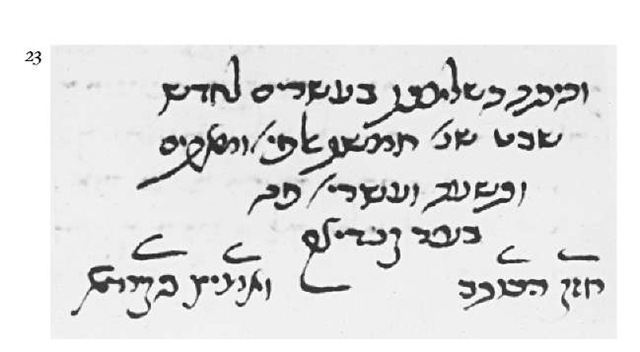
Figure 23 Yevanic cursive script used for a copy of Joseph Albo’s Sefer ha-Ikkarim made in 1469.
Figure 24. The Italkian cursive script in a manuscript of the 10th or 11th century.
Figure 25. Halakhic letter in Italkian cursive script written by Isaac of Morell in 1581.
Figure 26. Italkian cursive script of 17th century.
Figure 27. A receipt in Zarphatic cursive script written in 1182 with a quill.
Figure 28. A 14th-century businessman’s notes in Zarphatic cursive script.
Figure 30. Psalm 6 written in Yiddish in Ashkenazic cursive script, 1532.
Figure 29. Diposition of a witness in Ashkenazic cursive script, 1266 c.E.
Figure 33. Yevano-Karaitic cursive script 1759.
Figure 31. Yiddish version of the Book of Esther in Ashkenazic cursive script, 1631.
Figure 32. Yevano-Karaitic cursive script, 16th to 17th century c.e.
Z arphatic type. The Z arphatic writing of figure 27 (12th century) might appear at first glance to be related to the Italkian type. However, it is unmistakably of a different kind. Perhaps the similarity arises from their both having been written with the same sort of pen – a quill – while the other types from early centuries previously dealt with here, were produced by a reed pen. The forms in figure 27 are all in a properly developed cursive, although they do not differ greatly in their basic structure from the square letters. The most characteristic are the alef, lamed, mem, final pe, and shin. This document is written in a book hand. Figure 28 (14th century) is in a less careful hand of the same type.
Ashkenazic type. The early Ashkenazic cursive is practically identical with that of the Z arphatic. Figure 29 (13th century) is not as carefully written as figure 26. It is not a book hand. During the next three centuries considerable changes took place (figures 30 and 31): the downstrokes of dalet and zayin end in a curve which is open to the left; tet has become a tick; the middle part of lamed has vanished, the letter being almost a straight line; in mem the left stroke is parallel with the right one and is generally of equal length – they are connected by a bridge, which is mostly horizontal.
Karaitic type. There are two extant specimens of Kara-itic cursive. Figure 32 (16^-17^ centuries) represents Yevano-Karaitic. The right strokes of alef are high up; gimmel resembles nun but its bottom stroke is straight and horizontal; the upper part of tet is in the upper half of the line; lamed has lost the middle stroke; the right stroke of mem is extremely short, the left stroke is very long, starting high above the line; final mem is circular; the same is true of samekh but it has a tail on the left; the inner stroke of shin is joined to the top of the left one, slanting down from above. The forms of Crimean Yevano-Karaitic (figure 33; 18th century) are more or less the same in structure as in figure 32 and yet the writing looks very dissimilar. There is a structural difference in the dalet and zayin, where the downstroke finally turns rightward.
Sixth Century b.c.e. to Second Century c.E.
The square script belongs to the Aramaic branch of Semitic writing. In the Babylonian-Assyrian and Persian empires the Aramaic language and its alphabet became the official language and script of the administration. They were also adopted by the Jews in Babylonia and elsewhere, and later penetrated Palestine. When the new script was officially adopted for the writing of Torah scrolls the change-over from the Pa-leo-Hebrew alphabet was complete although the old script was twice revived, centuries later, for legends on the coins under the Hasmoneans and under Bar Kokhba. The oldest dated document in the new script and language comes from Egypt (515 b.c.e.; figure 1). The script is highly stylized, with very thin downstrokes slanting to the left and very thick horizontals (or near-horizontals) dominating the picture. From this general Aramaic writing the Jews and the other peoples of the region – Palmyrene, Nabateans, etc. – in the course of the next few centuries developed types of their own. By the end of the fourth century b.c.e. the Jewish forms closely approached the full-fledged Jewish script (figure 2). Therefore it should properly be termed Jewish script rather than "Hebrew script," since it was used by Jews, not by Hebrews (nobody would apply the term Hebrews to the Jews of that period). In speaking of this writing the designation Hebrew script should therefore be dropped; it could then be employed to describe the alphabet of the Hebrews. This would, in addition, have the advantage of conforming to the usage in the ancient sources, where ketav ivri denotes the pre-Exilic script. So long as the name Hebrew script continues to be used for the Jewish script, the script of the Hebrews ought to be designated Paleo-Hebrew, the term introduced in The Hebrew Scripts (see bibliography). In the second half of the third century b.c.e. Hebrew writing was already on the threshold of the square script (figure 3). By the middle of the second century b.c.e. further development had noticeably taken place (figure 4) and during the first centuries b.c.e. and c.E. the final form had almost been reached (figure 5).
The evolution from the sixth century b.c.e. was considerable. Figure 6 illustrates this step by step, through the six stages of the final mem. The top of the first form is a cursive development of the original W-form (which has been preserved in the Roman M).
Appearance of the Letters
For the second century c.E. it is already possible to speak of the square script proper (figure 7). By the seventh century (figure 8) almost every letter of the alphabet had either a top bar or a head, while many had a base as well. The invisible frame within which a letter was written was a rectangular oblong standing on one of its shorter sides. Only rarely was this frame a square. Hence the name square script is really a misnomer. At certain periods in certain regions the frame was not rectangular, the downstrokes being oblique while the top and bottom strokes remained horizontal (see, for instance, figures 24, 29, 34). After the first few centuries the evolution proceeded at a very slow pace. The changes did not involve the structure of the letters but the style of the writing. Perhaps by the seventh century (figure 8) there was a tendency for the horizontals to be thick, while the downstrokes were thinner, or thin. The first dated manuscript (from 896 c.E.) of the fully developed calligraphic kind (figure 9) was written in a style which has remained virtually unchanged ever since (figure 10). While the horizontals had originally played a very minor role compared with the uprights, the opposite extreme had now been reached. The near-polarization of horizontal and upright strokes had not resulted in a dull geometrical pattern: some oblique strokes were left outside the system, some strokes extended above or below the line – the strokes themselves were not geometrically straight but slightly curved, wavy, or tapering. The great weight of the horizontals created a clear impression of continuity along the line. Half the letters rested on their bases, and the other half partly stood and were partly carried by their neighbors, in the manner of a suspension bridge. But, although strongly linked together, they did not lose their individuality. The evolution of the forms from the sixth century b.c.e. is here illustrated by the letters he and samekh (figure 11). It can be seen that the change in the first five centuries (see lines 1-5) was much greater than during the last eight (see lines 6-7).
One detail in the development of the forms - the rise of the litterae dilatabiles – requires special mention, because it falls outside the category of structural evolution, and is of a purely aesthetic nature. Certain letters, when they stood at the left end of a line but did not reach as far as the actual edge of the column, had their top bars extended to that edge so that the line might be of the same length as all the others. The effect was to make the left edge of the column neat and straight, and ensure that the general appearance of the page should be pleasing to the eye. This device – dilatation is the term introduced in The Hebrew Scripts – no doubt arose spontaneously and spread among the scribes because it combined the virtues of simplicity and effectiveness. These forms do not appear to antedate the sixth to seventh centuries c.e.
Although an increasing number of Jews lived outside Palestine after the Babylonian Exile, there must have been close contact between them and Palestinian Jewry. This is evidenced by the fact that for a long time no divergent development took place. But such a state of affairs could not continue beyond a point, as forms do not remain static forever and writing, like language, is subject to change. As the dispersion of the Jews increased, separate developments set in, and each distinct cultural branch which grew up had its own type of writing. In some cases differentiation was restricted within narrow limits but in others divergence went very far, even though the conscious aim of the scribes was to reproduce faithfully the traditional forms of the letters, especially in the copying of synagogue scrolls. Other than in scrolls, tefillin, and mezuzot, the square script was used in biblical, liturgical, and talmudi-cal codices but hardly ever in any other books. Certain letter forms were reserved for the scroll script.
Basic Types
The main groups or types of writing which came into being in the various Jewries are Ashkenazic in Germany and in Ash-kenazi settlements elsewhere, Babylonian, Egyptian, Italkian, Maaravic in the Maghreb, Palestinian-Syrian, Parsic in Persia and Parsi settlements, Sephardic in the Iberian Peninsula and Sephardi settlements, Temanic in the Yemen, Yevanic in the Balkans and Crimea, and Z arphatic in northern France. There were also some small groups, e.g., the scripts of the Jews in China or India. The Karaites developed three main types of their own (see below).
It is hardly ever possible to establish, with any measure of certainty, the genetic relation between the types, because the small amount of early material known was penned centuries after the group in question came into existence, and by then time had effaced any obvious clues. Sephardic appears to be an extension of Maaravic. Maaravic is presumably a continuation of the Palestinian-Babylonian-Egyptian complex. Parsic, though very individual, might be descended from Babylonian, and the same possibly holds good of the equally individual Temanic. There is, however, one exception where the relationship between two types is beyond doubt: the case of Ashkenazic and Z arphatic. Ashkenazic is definitely the continuation of Z arphatic.
Egypt Types
Outside Palestine only the Egyptian branch provides pre-square material (see above, figures 1 and 2). The oldest datable Bible manuscript, written in Egypt in a calligraphic hand, is of about the fifth century c.e. (figure 12). Although earlier than figure 8, it is in a more regular, formal style. A non-biblical manuscript dated three centuries later is written in an almost modern hand (figure 13).
The final stage of calligraphic development in Egypt was reached in the 10th and 11th centuries (figure 14), when horizontals were thick but not excessively so.
Babylon Type
The forms in figure 15, a non-biblical Babylonian manuscript of about the eighth century, are even less formal than those of the corresponding manuscript of the same time in Egypt but the forms in the biblical manuscript in figure 16 (written in 916 c.e.) are practically identical with those in the corresponding manuscript written in the Egyptian type; however, in figure 16 there is not much contrast between the thickness of the horizontals and verticals.
Parsic Type
The Parsic type, i.e., the script of the Persian Jews and their descendants outside Persia, is presumably derived from the Babylonian one, although there is too little early comparative material available to arrive at a paleographical decision. The earliest available documents already show a highly individual development. By the 16th century (figure 17, of 1571) the forms were so completely different from the Babylonian ones that the gulf must by then have been in existence for a very long time. The style was much less regular and formal, and there was an absence of monumentality. The horizontal strokes were very thick, the downstrokes thin. This contrast was already in evidence, though to a less marked degree, in the tenth century, when it is encountered in Palestine and Egypt – a striking example of how, in spite of geographical separation, new developments spread from group to group.
Temanic Type
Yemen was the southernmost early seat of Jewish writing. The available material begins approximately with the 12th century (figure 18). The contrast in thickness between horizontals and downstrokes was by then in full force. The term for this type as used in The Hebrew Scripts is Temanic. Like the Parsic type it is not regular and formal, and thus contrasts sharply with the Palestinian-Syrian, Egyptian, and Babylonian types. However, Temanic does not otherwise resemble Parsic, as a comparison of a manuscript of 1468 (figure 19) with the Parsic one of 1571 (figure 17) will show.
Maaravic Type
The northwestern shore of Africa – the Maghreb – was the home of the Maaravic type of the Jewish script, which had presumably followed the line of migration from Egypt westward, its forms being closely related to those of the Palestinian-Syrian/Egyptian/Babylonian complex. The general impression given by the script of the earliest available dated Maaravic Bible manuscript of 946 c.E. seems to point to a closer relationship with the Palestinian than with the Egyptian and Babylonian types. The contrast between thick and thin strokes is clear but not so great as in some of the above-mentioned types. In the non-biblical fragment of 978 c.E. (figure 21) the writing is slightly less formal. But Maaravic is connected not only with the east; there is also a close link with Europe, i.e., with the Sephardic type of the Iberian Peninsula.
Sephardic Type
This type is practically identical with Maaravic. It is to be assumed that Sephardic was introduced from Africa. However, available material of both types, which is of rather late origin, provides no definite proof. An epitaph which is of an unusually earlier date (sixth century, figure 22), and contains some rather archaic forms, also provides no proof in this respect. The possibly oldest pen-written Sephardic manuscript available comes from the ninth-tenth century (figure 23). Here the contrast between thick horizontals and thin down strokes is great. The writing is considerably less formalized than that of the Palestinian-Syrian-Egyptian-Babylonian complex. That stage was reached, and surpassed, by the 12th century.
The biblical manuscript of 1207, illustrated in figure 24, shows forms which are harmonious and regular without being rigid. The next three centuries saw hardly any change at all, and, upon the introduction of the printing press, the typeface was designed on the basis of contemporary manuscript forms. Through a historical accident only this typeface has survived to the present day, while the two other early typefaces (see below) disappeared. In the course of the centuries it deteriorated very much aesthetically, as a comparison between figure 24 and printed books from various ages will show.
The Sephardic type was not restricted to the Iberian Peninsula. It spread to the north of it; it was also employed in Provence, Languedoc, and Comtat Venaissin. When contact with Spain ceased, upon the expulsion of the Jews in 1492, the script north of the Pyrenees and that of the exiled Sephardim started developing on divergent lines. In the new settlements, too, differentiation arose. The form used in the largest and most important of these – that in Turkey – is the main representative of the Sephardic type.
Yevanic Types
With Sephardic the Jewish alphabet entered Europe from the southwest. But its southeastern entry was perhaps of even greater consequence. Hardly any material has survived from Greek-speaking Jewry in Asia Minor and Greece during the Hellenistic period. However, slightly more material, the oldest available documents of the Yevanic type in Europe, has survived from Magna Graecia. These documents are also the earliest extant written in the Jewish script in Europe (see above, the section Cursive Script, figure 22). The oldest available example of the square style comes from Asia Minor (figure 25). It clearly belongs to the neighborhood of figure 5. No early biblical manuscript is available from this group but to judge by the conditions in other types the tenth-century fragment shown in figure 26 might indicate that there was a calligraphic biblical square style then in existence.
Italkian Types
The next stage was in Italy. Is the Jewry of this country descended mainly from the Jews who lived there in antiquity, or is the main source perhaps the settlement in Magna Grae-cia? If the latter, the Italkian type would have its roots not in the Palestinian but in the Yevanic type. The documents (inscriptions) start about 300 c.E. (figure 27). The earliest square manuscript, a biblical one, is of 979 c.E., the oldest from Europe that is dated (figure 28). The contrast between thick and thin strokes is strong. The style of the writing is quite unlike that of the contemporary western Oriental groups or that of Maaravic and Sephardic. Comparing the forms with those of figure 10, it would be most difficult, at first glance, to say exactly what makes them appear so different although the corresponding letters are constructed identically. In the 15th century the thick/thin feature was – perhaps under Ashkenazic influence – so pronounced that the script looked as if it consisted only of horizontals (figure 29, of 1466). When, not much later, the typeface was designed, this kind of writing was not chosen as a model (figure 30).
Z arphatic Types
In central and northern France the Sephardic type that was encountered in southern France was not found, a result of the southern provinces coming only very late to the French Crown. It is therefore misleading to use, in this context, the word French, with its wide connotation. The traditional Hebrew name for the northern and central region, Z arefat, is the source of the term Zarphatic, introduced in The Hebrew Scripts. In the earliest manuscripts certain similarities with the Italkian type can be noted. Was there perhaps a genetic relation between the two, or do they represent separate, independent developments going back to Roman times? Current information is insufficient to answer the question, as no available Z arphatic manuscripts antedate the 12th century (figure 31). The difference between thick and thin strokes was strongly marked. Z arphatic did not long survive the expulsion of the Jews from France (1394) because the refugees were absorbed into the Jewries of their new homes. The Z arphatic type also included the script of medieval England, where the Z arphatim had settled in Norman times. It came to an end after only two centuries, when the Jews were expelled from England in 1290.
Figure 1. The oldest known example of Aramaic square script, a papyrus deed of 515 b.c.e.
Figure 3. The earliest example of Jewish square script: a passage.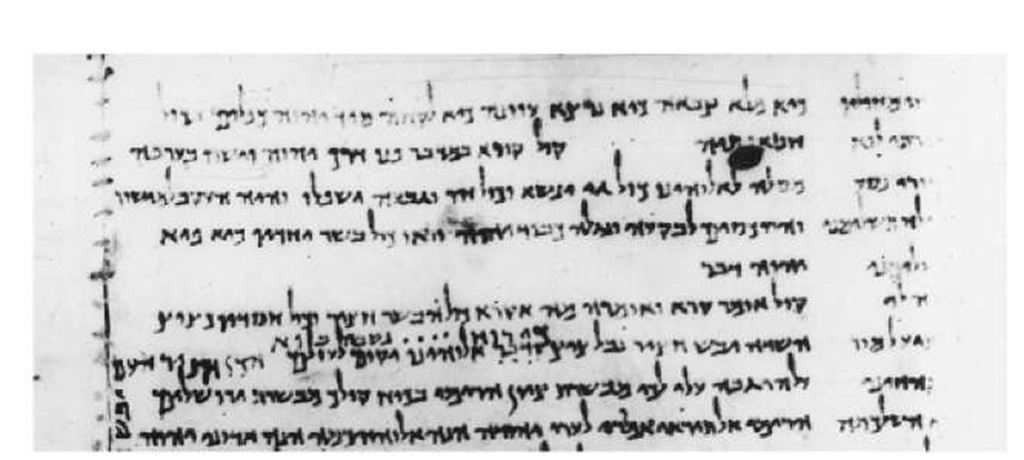
Figure 4. Square script of the mid-second century b.c.e. in one of the Dead Sea Scrolls.
Figure 2. The transition to Jewish square script is shown in this document of c. 300 b.c.e.
Figure 5. Tablet recording reburial of the remains of King Uzziah between first century b.c.e. and first century c.e.
Figure 8. Excerpt from Palestinian Targum, c. seventh century c.e. in Jewish square script.
Figure 6. Evolution of square script illustrated in the final mem.
Figure 7. Passage from Exodus in Jewish square script, first half of the second century c.E Jerusalem.
Figure 10. Passage from Deuteronomy in Jewish square script 930 c.e.
Figure 9. Earliest extant example of the fully developed Jewish square script, 896 c.e.
Figure 11. Evolution of the letters he and samekh between the sixth century b.c.e. and the seventh century c.e.
Figure i2.The oldest datable Bible in Egyptian square script, c. fifth century c.E.
Figure 14. Final development of Egyptian square script: manuscript of Genesis c. tenth century c.E.
Figure 13. Piyyut by Eleazar Kallir in Egyptian square script c. eighth century c.e.
Figure 15. Babylonian square script used for a halakhic Midrash to Leviticus, c. eighth century c.E.
Figure 16. Excerpt from Book of Ezekiel in Babylonian square script, 916 c.E.
Figure 17. Passage from Leviticus in Parsic square script 1571 c.e.
Figure 18. Temanic square script, ii’h-i2th century c.E. A Yemenite manuscript of Numbers with Targum.
Figure 19. Passage from Job in Temanic square script, with Arvic translation, 1468.
Figure 20. Earliest dated Bible manuscript in Maaravic square
Figure 21. Fragment of legal deposition in Maaravic square script, 978 c.E.
Figure 22. Epitaph in Sephardic square script from Tortosa Cathedral, Spain.
Figure 24. Passage from Joshua in Sephardic square script, 1207. 
Figure 25. Epitaph in Yevanic square script, early second century c.E.
Figure 23. Sephardic square script ninth-tenth century c.E.
Figure 26. Yevanic square script in a Hebrew-Greek glossary of the tenth century c.e.
Figure 28. The oldest European Ms. in Italkian square script. Bible dated 979 c.E.
Figure 27. Epitaph in the Monteverde Catacomb, Rome, in Italkian square script, c. 300 c.E.
Figure 29. Extract from a prayer book in Italkian square script, 1466.
Figure 30. Early printed Bible in Italian square script, 1482.
Figure 32. Epitaph from Mainz, Germany, in Ashkenazic square script, 1082 c.E.
Figure 33. Extract from Bible of 1236 in Ashkenazic square script. 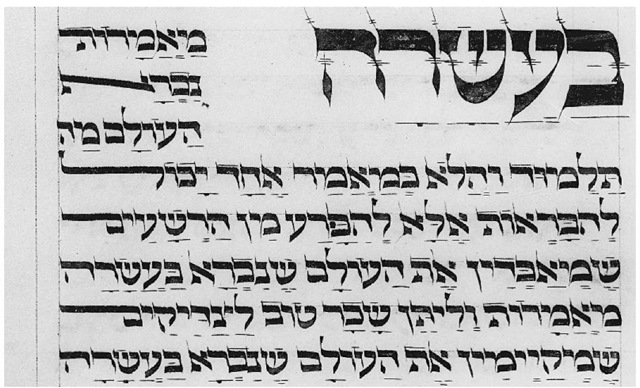
Figure 34. Extract from the tractate Avot in Ashkenazic square script, 1432.
Figure 35. Fifteenth-century typeface in Ashkenazic square script.
Figure 31. A 12th-century Bible Ms. in Zarphatic square script.
Ashkenazic Types
The earliest specimens of the Ashkenazic type (Ashkenaz is the traditional Hebrew name for Germany) show identity of script with Z arphatic. It therefore may be concluded that the Ashkenazic group is descended from Z arphati Jewry – which confirms the existing tradition to that effect, and corroborates the evidence provided by the Romance element in the Yiddish language. Available Ashkenazic material dates from the first half of the 11th century, consisting of epitaphs, the first dated one being of 1034, while the earliest manuscripts can be ascribed to the 12th century; of these, the first dated manuscript in square script is from 1236. Ashkenazic is one of the three richest sources of codices, the others being Sephardic and Italkian. The early epitaphs showed well-proportioned, pleasing lettering (figure 32, of 1082). Here there was no difference between the thickness of horizontals and verticals, while the Bible manuscripts of even earlier dates in the other types already had that feature fully developed. The earliest dated Ashkenazic Bible manuscript had the thick/thin contrast (figure 33, of 1236). By the 15th century the domination of the horizontal strokes had reached its climax (figure 34, of 1432): the horizontals were longer, i.e., the letters were wider. In addition, the letters had a characteristic stance. In all groups and during all periods the downstrokes slanted somewhat to the right, so that the letters leaned slightly to the left. But now the slant had become considerably more pronounced (compare figure 34 with, for instance, figure 29, which was otherwise written in the same kind of script). Curves and undulating elements decreased, the forms became slightly rigid, though less so than in the printers’ typeface (figure 35): When the typecutters transferred the handwritten forms onto the metal, they regularized them geometrically. They also diminished the preponderance of the horizontal strokes. The thick horizontals began to be taken over for lapidary use in the 13th century; they became the rule toward its end. Detailed research might establish whether the development of the thick/thin feature was purely a matter of aesthetics, or whether there was a special reason, or a partial one, perhaps the transition from the reed pen to the quill.
Karaitic Types
Finally, there was the script of the Karaites. They had cut themselves off from rabbinical Judaism in early times but continued to use the Jewish script, as they considered themselves to be the real Jews. In their hands it underwent a distinctive development, which is not surprising as there is an intimate connection between religion and script throughout history and in all cultures. No single Karaite type existed; in various regions different Karaitic types developed from the Rabbanite types. Material dated from the 11th century onward is available, but on the whole is sparse. There was a southern Karaitic type in Egypt and Palestine, Yevano-Karaitic in the Byzantine regions, Parso-Karaitic in Persia.
From the above review of the square script it may be seen that there are many unsolved problems. An answer to some might be found by further research. For the fact is that the study of the Hebrew, i.e., the Jewish script, is, after all, still only at its beginnings. And the field is vast – stretching over more than two thousand years and many regions of the Old World.
MASHAIT SCRIPT
Cursive was sometimes used as a book hand when, of course, more care was taken with the writing. But this did not involve an approximation to the square; it led to elaboration and orna-mentality of a different kind, and thus to the shaping of a new style, the mashait script (incorrectly designated "rabbinic").
The Palestine-Syria Type
This development took place independently in the various types and differed in degree from type to type. Evolution away from the cursive was greatest in the European types; in the Oriental ones there was little of it. A good example is in a specimen of the Palestine-Syria type (figure 1; 11th century). Alef has the pure K-structure; in lamed the horizontal stroke is omitted; mem has no base; final nun starts with a curve at the line bottom and is thus rather short; the inner stroke of shin tends to be slightly curved and joins the upper part of the left stroke. The forms in figure 2 (15th century) show very little change in detail but the general impression is one of a regular, pleasing hand. Alef has the square construction; zayin is a wavy line of the question mark type; the alef part of the alef-lamed ligature is a flattish parabola; final nun is a shallow S-wave, starting from the line ceiling; the inner stroke of shin is a little curve in horizontal position, joined to the top of the left stroke.
Egypt Type
This type, like Palestine-Syria, is the basic kind of mashait (figure 3; 13th century). The two right strokes of the K-form of alef are joined high up to the top of the left stroke; the left stroke of tet is of double height but does not extend below the line bottom; lamed has the two-stroke form; mem has no base; final nun starts slightly below the line ceiling; samekh is a circle; the middle stroke of shin is a horizontal curve joined to the top of the left stroke. Figure 4 (1326) shows a somewhat more formal hand. The two right strokes of alef are high up but, in contrast with that in figure 3, the letter is based on the square construction, except that the right stroke joins the outer end of the middle stroke; generally the left stroke does not extend beyond the line ceiling; the alef part of the alef-lamed ligature is a shallow oblique S-wave, or even a straight line; the left stroke of samekh is short and only starts at the line bottom so that the letter is open on the left.
Babylonia Type
Figure 5, a Babylonian specimen (tenth century), also represents the basic kind. The alef part of the alef-lamed ligature is the unchanged right-hand part of alef mem has a short base which is often curved; the inner stroke of shin is joined to the middle of the left stroke. The modern hand is shown in figure 6. The right stroke of alef is above the line ceiling, joining the top of the left one – it often looks as if it were its top part; the original middle stroke is strongly curved and situated in the upper half of the line height; gimmel has the form of what, in most types, is a nun; he has the question mark shape; lamed has the two-stroke form; the right stroke of mem has shrunken to a tiny stroke at the line ceiling – it is now nothing but the beginning of the inner stroke, changing it into a shallow S-wave; the left stroke has become long, filling the whole line height, without, however, extending above the line ceiling; final mem is a circle; zadi is a tall S-wave; the inner stroke of shin has become a dot at the top of the left one; the left downstroke of tav is severed from the top stroke, beginning at the line bottom and running rather far down.
Parsic Type
Although the individual letter forms of the Parsic type (figure 7; 14th century) present nothing unusual, the general picture is very distinctive. The main reason is the thickness of the horizontal strokes, which has the effect of reducing the distance between the top bar and base to a very narrow gap. Alef looks like a Roman N with the two right strokes half up the line height; zayin is a flattened Roman Z – it has thus almost returned to the Old Semitic form; the middle stroke of lamed has become the top part of the curve which is the lower half of the letter; mem has no base; the inner stroke of shin is a small curve in horizontal position. The top stroke of gimmel in figure 8 (18th century) slants down rightward, and is continued on the line bottom by a horizontal piece, which then slants down leftward below the line bottom. The zayin of figure 8 (18th century) has become unsymmetrical: the top stroke is much smaller than the bottom stroke, and sometimes disappears altogether; mem has no base; the inner stroke of shin has become a small curve, joined to the top of the left one. The modern forms (figure 9) do not differ from those of figure 8, or, for that matter, from modern cursive. The form of the alef here is an extremely rare one; what distinguishes gimmel from nun is that it is an acute angle, whereas nun has a rounded corner; the downstroke of dalet ends by turning right; zayin is of the question mark type; final mem is circular but the stroke often ends outside the letter with an upward movement; samekh is written in the same way, but when the top is reached a downstroke is added. In the somewhat cursive writing of figures 8 and 9, the thickness of the horizontals is less pronounced. The tall forms of dalet and resh are very rare, and have obviously been adopted from outside – they were used in the neighboring Babylonian type at least from the late 15th century.
Temanic Type
This type shares with Parsic the thick horizontals and the consequent narrowing down of the space between the top bar and the base (figure 10; 13th century). The main stroke of alef has become horizontal, resting on the line ceiling; the alef part of the alef-lamed ligature is, on the whole, rather angular, as in alef; zayin is a small – sometimes very small – downstroke, crossed by a short horizontal; tet is like the Ashkenazic cursive form but preserves the inner stroke; the middle stroke of lamed is straight and horizontal; the right stroke of mem very occasionally ends in a short base; final mem differs from samekh in not having a downstroke on the left; samekh is generally less wide, and the downstroke has sometimes become a mere tail, resulting in an open letter. All downstrokes slant rightward. Three centuries later (figure 11; 15th century) the style is rather different, although very little change has taken place in the forms themselves. The horizontals are much less thick. The middle stroke of alef begins by being straight and horizontal, and then curves downward but does not reach the line bottom; the alef part of the alef-lamed ligature generally corresponds to the form in figure 10, but two other types are occasionally to be met with – one is identical with the right part of the square form, and the other is a shallow S-curve, running from the top right to the bottom left; the top of zayin is a tick, and the end of the downstroke turns rightward. The general style of figure 11 continues unchanged for two more centuries (figure 12; 17th century). The lower right stroke of alef now reaches the line bottom, unless prevented by the preceding letter; the alef part of the alef-lamed ligature corresponds to the square form; zayin is unchanged.
Maaravic Type
The forms of the Maaravic type (figure 13; 14th century) are cursive but written with care and regularity. The same applies to the specimen from the next century (figure 14). Here the parallelism of the downstrokes is developed to an extreme degree. Its impact is intensified by the high and narrow look of the letters, arising from the shortness of the horizontals. The right part of alef is high up and very small; gimmel is a right angle; final mem is an oval in the upper half of the line; samekh is triangular. The style of extreme parallelism seems to have been characteristic of one particular region and period, and is not met with again subsequently (see, for instance, figure 15; 18th century). An interesting detail in this specimen is that the alef of the big display script used for two initial words, is written in cursive, while the text itself is in mashait.
Sephardic Type
This type (figure 16; 11th century) corresponds to the cursive of the same period (figure 19, Cursive Script). It is clearly well advanced toward a fully developed mashait, although, in many letters – e.g, in he, mem, shin – formality is achieved by features from the square. Alef is of the K-type; the middle stroke of lamed is fused with the downstroke to form a semi-circle in vertical position; final mem is more or less round; samekh is quadrangular; shin consists of a base and three parallel downstrokes, the inner one of which often does not reach the base. In the 15th century Sephardic mashait (figure 17) reached its climax, being a beautiful book of a high order. Legibility, however, is not good, the letters are narrow and very close to each other, and any downstrokes that end leftward touch the next letter. When the right downstroke of a letter does not turn leftward at the line bottom, it stops midway down the line height. Starting from the tip of the left stroke the lower right stroke of alef begins horizontally on the line ceiling and ends by curving clown to the middle of the line height; the right top stroke is very thin and short, above the line ceiling; final mem consists of two more or less rounded halves, top right and left bottom; the bar of final pe has a little stroke at its left end, which represents the original top of the left stroke; the right stroke of zadi and final zadi is an extremely short horizontal which joins the top of the left stroke; the same applies to the inner stroke of shin. Transferred to the typeface of the printing press, this script, like the square, lost much of its beauty (figure 18; 18th century). Although only a shadow of its former self, it is still a pleasing hand. The usual, but incorrect, designation for it is "Rashi script," obviously because *Rashi’s commentaries on the Bible and Talmud – the books which everybody was constantly handling from boyhood to old age – were printed in (Sephardic) mashait. Rashi himself, naturally, wrote in Z arphatic (see below).
Provencal Sephardic Type
For a long time this type did not differ from the Iberian type. Figure 19 (13th century) is a very plain hand. Alef, more often than not, has the cursive form. Figure 20 (15th century) is a beautiful hand. Figure 21 (18th century) is far inferior, but its mashait character is more pronounced than in the Sephardic type of figure 18.
Yevanic Type
The 13th century Yevanic mashait is a very plain hand (figure 22). Alef consists of a lower main part and an upper one, the lower combines the lower halves of the former left stroke with the former main stroke, resulting in a circumflex; the former right stroke and the upper part of the former left stroke remain separate; the downstroke, both of dalet and he, finally turns rightward. Figure 23 (15th century) is a more formal script but much less elaborate than contemporaneous Sephardic. In contrast with the latter, the horizontals play a very big role. Dalet and zayin have the same characteristics as in figure 22; the inner stroke of shin is short and joined to the middle of the left one.
Italkian Type
The first specimen of Italkian mashait (figure 24; c. 11th century) shows a very regular and pleasing hand, which, however, is not yet calligraphically developed. The left down-stroke of he still issues from the top bar; shin is practically triangular, and the middle stroke is short and does not reach the line bottom; the frequent expression "he said" is always rendered by an abbreviation; the left stroke of alef and the left top stroke of the mem are omitted. In the 14th century a highly calligraphic style was reached. The horizontals dominate the picture in the way they do in the square, and a number of letters have the same structure, although their appearance is very different indeed – cf., for instance, the mems or nuns of the two styles occurring in the specimen (figure 25). There are practically no straight strokes; everything is curved. About a century later (figure 26) the difference between the thick horizontals and thin down-strokes is even greater. The latter have become thinner, longer, and straighter, and all the letters have a strong leftward slant. The downstrokes of the long letters are shallow S-curves, rather thick in the middle. Figure 27 shows the contemporaneous typeface. The designer evidently wished to avoid extremes.
Zarphatic Type
The Z arphatic forms of 12th-century mashait (figure 28) are clearly distinct from those of the contemporaneous cursive: not only are they very carefully written but they differ in many details. The right part of alef is at the line ceiling; the top part of kof is a horizontal line – only the merest trace of the down-stroke is left. The fully developed calligraphic hand begins in the 13th century. Most downstrokes are shallow S-waves, thickened in the middle (figure 29; 14th century). Neither horizontals nor verticals dominate the picture. The distance between the letters is reduced to a minimum; very often they actually touch. Shin has a wide horizontal base. By the 15th century, only traces of this calligraphic style (figure 30) survived.
Ashkenazic Type
The differences between the 13th-century Ashkenazic mashait of figure 31 and the almost contemporaneous Z arphatic of figure 28 appear to be due only to the individualities of the scribes. Further research is needed to establish when the divergence between the two types became pronounced. It seems that the full development of the calligraphic style was reached in Ashkenazic very slightly later than in Z arphatic and that, like there, it was soon simplified (figure32), surviving only as a display script (figure 32, top and bottom). The plain style is the basis of the typeface (figure33).
Southern Karaitic Type
The 16th-century Southern Karaitic type of figure 34 is pleasant to the eye. There is not much difference between the thick and the thin strokes. The opposite may be said of the Yevano-Karaitic specimen (figure 35; 16th century).
Figure 2. Palestine-Syria mashait script, 1443. Hamburg, Staatsund Universitaetsbibliothek, Cod. heb. 56, fol. 32v.
Figure 1. Excerpt from letter in Palestine-Syria mashait script, 1094 c.E.
Figure 3. Deposition by a witness in Egyptian mashait script, 1218.
Figure 4. Part of Tanhum Yerushalmis commentary on Ecclesiastes in Egyptian mashait script, 1326.
Figure 6. Modern Babylonian mashait script.
Figure 5. Babylonian mashait script, end of tenth century c.e.
Figure 7. Grammatical treatise in Parsic mashait script, 1312 c.E. 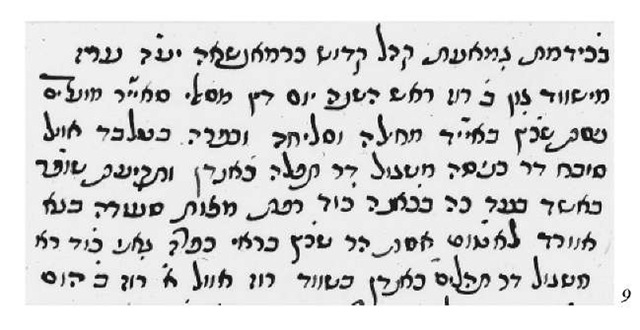
Figure 9. The Parsic mashait script of today.
Figure 11. Temanic mashait script as used in the Mahberet attijan, 1490.
Figure 10. Temanic mashait script used in a copy of Maimonides’ commentary on the Mishnah, 1222 c.E.
Figure 8. Excerpt from Shahin Shirazi’s Judeo-Persian paraphrase of the Pentateuch in Parsic mashait script, 1702.
Figure 14. Extract from a mahzor in Maaravic mashait script, 1401.
Figure 12. A mahzor of 1674 in Temanic mashait script.
Figure 13. Colophon in Maaravic mashait script, 1364 c.e.
Figure 16. Deposition by a witness in Sephardic mashait script, 1096 c.E. 
Figure 20. Mahzor of 1453 in Provencal Sephardic mashait script.
Figure 17. Responsa of 1417 in Sephardic mashait script.
Figure 19. Grammatical treatise in Provencal Sephardic mashait script, 1264 c.e.
Figure 15. Maaravic mashait script from a mahzor of1769.
Figure 18. Marriage deed printed in Sephardic mashait script.
Figure 23. Excerpt from Yom Tov Lipmann Muelhausens Sefer Nizzahon in Yevanic mashait script, 1459.
Figure 26. Mahzor in Italkian mashait script, 1466.
Figure 24. An 11th-century copy of the Midrash Genesis Rabbah in Italkian mashait script.
Figure 25. Italian translation of a hymn, written in Hebrew Italkian mashait script, 1383.
Figure 21. Mahzor 0/1713 in Provencal Sephardic mashait script.
Figure 22. Excerpt from Abraham Ibn Ezra’s astrological treatise, Reshit Hokhmah, in Yevanic mashait script, 1267.
Figure 27. Excerpts from a book printed in Italkian mashait script, 1476.
Figure 28. A liturgical poem in Zarphatic mashait script, c. late 12th century.
Figure 30. Zarphatic mashait script, 1429.
Figure 31. Ashkenazic mashait script, 1220.
Figure 32. Extract from Isaac Duerens Issur ve-Hetter in Ashkenazic mashait script, 1477.
Figure 29. Commentary on the Rosh Ha-Shanah liturgy in Zarphatic mashait script. 1301 c.E.
LETTERS USED AS NUMBERS
Although in some early Hebrew inscriptions (such as the Samarian ostraca) there appear certain symbols which may be taken as numerals, in general letters of the alphabet were used as numerical signs. This usage is not biblical. It may have been an imitation of the Greek custom; the first traces of it are found on Hasmonean coins (c. 135 b.c.e.) The letters from alef to tet stand for the units in succession; yod to zaadi for the tens, and kof to tav for hundreds (that is, up to 400). In the Talmud the numbers above 400 are formed by compositions (500 = 400 + 100 (p’Tl); 900 = 400 + 400 + 100 (p"nn), and so on; in later times the final forms of the letters kaf"],
Figure 34. A manuscript of 1520 in Southern Karaitic mashait script.
Figure 35. Extract from a prayer book in Yevano-Karaitic mashait script, 1525.
mem D, nun pe and zaadi f were not infrequently used for 500, 600, 700, 800, 900). The thousands are represented by the same letters as the units, but are generally followed by a kind of apostrophe (or two dots are placed above them: 5727 = ‘H). Numbers above ten are expressed by a combination of letters, those denoting the higher numbers being placed toward the right (e.g., 182 = 2"Sp). In an indication of the date of the year, the letter representing the thousands is generally omitted (5727 = T"3^n). The numbers 15 and 16 are not denoted by the letter H"’ and 1"’ (since these combinations represent the abbreviated form of the Tetragrammaton): instead, the combinations 1"0 ("nine and six") and T"0 ("nine and seven") are used.
BRAILLE
This system enables the blind to read and write Hebrew with speed and relative facility. Until the 1930s, each school engaged in educating the blind and in printing Hebrew works in Braille developed its own system of Braille signs. There was no standard system of pointing Hebrew letters and a pupil graduating from a given Jewish school for the blind was unable to read the literature published by another. In 1936, an agreement was concluded among all the institutions engaged in the publication of the Bible, the translation and copying of books into Hebrew, and the writing and editing of material in Hebrew Braille. The agreement called for a uniform method of Hebrew Braille pointing to be adopted by all educational institutions concerned with the needs of blind children, as well as by the cultural centers providing Braille literature in Hebrew for the blind all over the world.
Figure 33. Ashkenazic mashait script in a book printed in Yiddish, 1543.
The problem and lack of uniformity in Braille writing existed in all languages and in schools for the blind all over the world. As a result of a unesco agreement in 1950, on the occasion of the international meeting on Braille uniformity, and upon the recommendation of the International Hebrew Braille Committee 1936-44, it was decided to adopt a uniform Hebrew alphabet in all countries and languages. According to this system, there are signs for the following characters: (1) all the Hebrew letters (with the exception of the end forms); (2) punctuation signs; (3) mathematical signs (numbers and notation); (4) all the Hebrew vocalization signs (the signs always follow the letter to which they belong); (5) signs for chemistry and physics; (6) signs for musical notes. Errors can be erased by straightening the embossed dots with the aid of a special implement or by passing six consecutive dots over the error. There are four institutions in the world engaged in the printing and publication of the Bible and books in Hebrew Braille: (1) the Jewish Braille Institute of America, New York; (2) the Israel Ministry of Education and Culture, Department of Special Education; (3) the Central Library for the Blind, Netanyah, Israel; and (4) the Jewish Institute for the Blind, Jerusalem.
In Europe and America finger spelling as a means of communication between the deaf has been accepted for decades. Latin finger spelling is not identical for all languages which use the Latin alphabet. In all systems of Latin finger spelling one principle determines the position of the fingers: the similarity of the position to the shape of the written letter. This principle aids in learning and memorizing finger spelling. This is also the reason that the finger spelling of many letters is identical in the systems used for the different languages written in the Latin alphabet. The need for finger spelling depends directly on the cultural needs of the deaf in his society. Hebrew finger spelling probably was not developed sooner because the intellectual level of the deaf in Israel, now average, was low 35 years ago. During the second decade of the existence of the State of Israel, educational and instructional activities for children and adults in the community of the deaf were greatly expanded. Even though only a small percentage of the members of the Association of the Deaf and Mute in Israel draws its information from reading, this group continues to grow. They express a readiness to learn writing and finger spelling in the clubs for the deaf which exist in several centers in the country. This is especially true of Helen Keller House in Tel Aviv, the national center for the deaf.
Hebrew Finger Spelling
In 1968 a system of Hebrew finger spelling was published by Jonathan Shunary, a teacher of the deaf. The system was developed according to the following principles.
(1) Thirteen of the 22 letters in the Hebrew alphabet are expressed by accepted positions for the Latin alphabet as established by the World Federation of the Deaf (the International Manual Alphabet). However, almost all of the positions adapted for Hebrew finger spelling represent sounds different from those used in the International Manual Alphabet. This was done to keep to the principle of making the position of the hand as similar as possible to the intended letter. This was important to make it easier to learn the system and to spread its use quickly among the deaf in Israel. The letters y, l, m, and n, are expressed as in the International Alphabet, since it is possible to associate these to the Hebrew letters. The letter a was given the numerical value of one, and the letter b the numerical value of two. For several letters the position suggests a word beginning with that letter (Heb. p^, devek, "glue"; Heb. □"rip, karnayim, "horns"), or symbolizes the position of the mouth during the articulation of the letter: for h the mouth is opened wide so the sign is a scratching palm, s is pronounced with a strong burst of air and so the fist is closed.
(2) Three letters representing consonants not used in the Hebrew language are included in the Hebrew system. This is necessary for foreign names, place names, names of people active in international politics, science, sport, cinema, etc. The sign for g (pronounced like the g in English "gin") is a reversed g with the fingers pointing down; the sign for z (pronounced like the j in the French word "jour," or s in the English word "leisure") is a reversed z; and that for c (pronounced like the ch in the word "church") is a reversed c.
(3) The system makes it possible to represent vowels which are not written in Hebrew as letters. (a) Every consonant followed by an a vowel can be expressed by moving the palm being used to the right. (b) e vowels are expressed by moving the palm being used downward. (c) i vowels are expressed by a slight twist of the palm being used. The letter vav thus serves to indicate two vowels, o and u, just as it does in written Hebrew. (d) o vowels are expressed by pointing the thumb up.
(e) the u vowel is expressed by pointing the thumb to the left and moving it in that direction.
Just as many signs are expressed while simultaneously employing the mouth or without sound, so there are those who use a combination of finger spelling and this type of speech. In this case the lips are used to express the vowels and the finger spelling is made simpler.
SHORTHAND
The first attempts at evolving shorthand were made in the 19th century. In 1866, for example, Max Gondos adapted the Gebelsberger German method to Hebrew. Other attempts were made by Wilhelm Lerfler, Dr. Hedrich, and L. Kutz. In 1918 Lenis tried to evolve a system of Hebrew shorthand. The reason for the late appearance of Hebrew shorthand ties into the fact that Hebrew was not utilized as a living language until the 1880s. The need became pressing after World War 1 when Hebrew was recognized as one of the official languages of Palestine and began to be used in courts of law and for administrative purposes. Although it was widely believed that there was no need for Hebrew shorthand, since the Hebrew spelling omits a considerable number of vowels, this view proved unfounded and it was discovered that ordinary writing could not keep up with the speed of speech. Methods were invented after World War 1 by (1) Ben Yisrael Zulman (1919); (2) D. Tames (1921); (3) Mrs. P. Shargorodska (1926); and (4) J. Maimon (1929).
Of all these methods, Maimon’s proved the most successful and popular among Hebrew shorthand writers. He began to evolve his method in 1924, basing it on the international shorthand system invented by General Felix von Ko-novsky. However, he also took into consideration the sounds and grammatical problems peculiar to the Hebrew language. He accordingly introduced amendments into the shortening of syllables and vowels and also invented special ideographs for Hebrew words. After working for several years on improvements, he published his first textbook of Hebrew shorthand in 1929; in 1932 he produced a guide called ElefKizzurei Millim ("One Thousand Ideographs"). Maimon decided that Hebrew shorthand must be liberated from the traditions of the normal Hebrew lettering and be independent of it. He therefore established that Hebrew shorthand should be written from left to right, unlike the square Hebrew lettering, since this movement is easier for the right hand, as in Latin characters, and that Hebrew shorthand should also represent the vowels, as in Latin characters, and not omit them, as in previous methods. He explained that in Hebrew, vowels often serve as important aids to recognition of a word, and that if the vowel of the first syllable is represented it would be possible, in many cases, to shorten the word without reducing the possibility of deciphering it. Furthermore, according to his method (and in accordance with international practice) the vowel signs in shorthand can serve as links between the consonant signs. Other systems have also been propounded: e.g., by H. Bar-Kama and H. and R. Shtadlan, who trained a considerable number of students and won a certain amount of popularity among Hebrew shorthand writers.
ALPHABET, HEBREW, IN MIDRASH, TALMUD, AND KABBALAH
The rabbis ascribed special sanctity to the letters of the Hebrew ^alphabet. The Psalmist’s declaration that "By the word of God were the heavens made" (Ps. 33:6) was taken to indicate the power of the letters, which form the "Word" of God. Bezalel succeeded in the construction of the tabernacle because he "knew how to combine the letters by which the heavens and earth were created" (Ber. 55a). These divine letters cannot be destroyed, and even when the material tablets were broken by Moses, the letters flew upward (Pes. 87b). Similarly when R. H ananiah b. Teradyon was wrapped in the Scroll of the Law and burnt by the Romans, he exclaimed, "the parchment is burning but the letters are soaring on high" (Av. Zar. 18a). The alphabet played a role in the creation of the world. Bet was chosen as the proper letter with which to begin the creation since it is also the initial letter of the word bera-khah ("blessing"). Furthermore, the letter bet had other desirable features. "Just as the bet is closed on all sides and open in front, so we have no right to inquire what is below, what is above, what is back, but only from the day that the world was created and thereafter" (Gen. R. 1:10). The claim of the letter alef was also acted upon favorably. It was finally placed at the beginning of the Ten Commandments. Another reason given for creation with a bet was to "teach that there are two worlds since bet has the numerical value of two" (ibid.). The Talmud related that this world was created with the letter he and the future world with the letter yod, both letters forming one of the names of God (Men. 29b). Every letter in the alphabet is granted symbolic meaning by the Talmud. Thus, for example, "alef bet means to learn wisdom (alef binah) while gimmel dalet means to show kindness to the poor (gemal dallim)" (Shab. 104a). Even the way the letters are written has significance. R. Ashi declares, "I have observed that scribes who are most particular add a vertical stroke to the roof of the letter het." This stroke signifies that "He lives in the height of the world" since the het is the initial letter of the word Hai, "He lives." The stroke above the letter indicates that the abode of the living God is on high. The addition of a letter from God’s name to a person’s name is indicative of Divine guidance and protection. Thus God placed a letter from his name, the vav, on Cain’s forehead (Gen. 4:15; pdRE 21). Abram’s name was changed to Abraham by the addition of the letter he (Gen. 17:5; Gen. R. 39:11). The yod which the Lord took from Sarai when her name was changed to Sarah complained to the Almighty that, "Because I am the smallest of all letters, Thou hast withdrawn me from the name of the righteous woman." God finally appeased the yod by utilizing it when Hoshea’s name was changed to Joshua by addition of this letter (Gen. 17:15; Num. 13:16; Gen. R. 47:1). The total number of letters in the alphabet, 22, is also given significance. The wicked King Ahab merited royalty for 22 years "because he honored the Torah which was given in 22 letters," by refusing to surrender it to Ben-Hadad, king of Aram (Sanh. 102b). Great significance is given to those psalms which are alphabetically arranged (in 119 and 145), as are the first four topics of Lamentations. Of the latter, R. Johanan declares that they were smitten by this alphabetical dirge, "because they violated the Torah, which was given by means of the alphabet" (Sanh. 103b). Halakhic exegesis also derives important laws from superfluous or missing letters in the bible and even from the flourishes and other graphic peculiarities.
In Jewish Mysticism
The early mystical literature of the Jews, composed soon after the Talmud was concluded, dealt extensively with the symbolism and secret meaning of the alphabet. Apart from the special mystical alphabets such as the Otiyyot de-Rabbi Akiva (c. 700) and the alphabet of *Ben Sira (Alphabetum Siracidis, c. 700), attention was devoted to the secret meaning of the letters. The most noteworthy works are the Sefer *Yezirah, the Heikhalot writings, the Pirkei de-Rabbi Eliezer, the Sefer Te-munah, *Shiur Komah, Harba de-Moshe, Sefer ha-Yashar, the Book of *Raziel and the Book of *Bahir. The important role that mystical symbolism of letters plays in these writings is already partly evident from their alphabetical structure and shape. The belief that the alphabet has mystical significance is based on the idea that the 22 letters of the alphabet are spiritual essences which came into being as emanations from God. The Talmud had already stated that God created heaven and earth with the help of the alphabet (Ber. 55a), and the idea that the 22 letters as spiritual states were the basis of creation recurs throughout mystical literature (Sefer Yezirah, 2:2; 5:22; Zohar, 1:3; 2:152; ZoharHadash, Ruth; Moses Cordovero, Shiur Komah, 8; Yal. Reub., Gen., and elsewhere).
The Letters As Spiritual and Material Structures
The letters, as written in the Torah, are reflections of the heavenly letters. Their relation to each other is like that of the male and female which attain fulfillment only in union (Zohar, 2:228; cf. 3:220). This characteristic is also expressed in the shape of the letters: alef is male, bet female, gimmel is again male, dalet female, and so forth (Zohar Hadash, Ruth). The form of the letters is not accidental; they are "spiritual essences whose external shape corresponds to their internal essence." The spiritual counterpart of each letter derives from the individual *Sefirot; thus, for instance, alef comes from Keter ("Crown"), bet from Hokhmah ("Wisdom"), gimmel from Binah ("understanding") and so on (M. Cordovero, Pardes Rimmonim, 27:2; Sefer ha-Temunah, the end of alef). When a person pronounces or uses letters of the alphabet, it awakens the spiritual essence contained in them and "sacred forms" come into being which rise and unite with their origins, the heavenly letters, "which are the sources of emanation"; there they become subtle and incorporeal, similar to what they were before they took on a definite material shape in man’s mouth (Cordovero, op. cit., 27:2; 9:3; 15:3; idem, Shiur Komah, 53; idem, Elimah (Ms.), 132; Sefer ha-*Kanah, 24; *Dov Baer of Mezhirech, Or ha-Emet, 12; idem, Maggid Devarav le-Yaakov, 28). The whole doctrine of the spiritual, supernatural character of the letters seems to have originated under the influence of the Pythagorean theory of numbers.
The Letters of the Torah and Prayers
The letters "are the apparel of the Torah, woven from all the colors of the light, white, red, green, and black" (foreword to Tikkunei Zohar). An individual section of the Torah, composed of verses, is as "the soul for its physical members [the verses]" and in the same manner as the words draw their vitality from the verses so do the letters from the words: the one is the soul of the other and the apparel of the one is that of the other (Pardes Rimmonim, 21:5). This explains the particular sanctity of the scroll of the Torah and of the act of writing it (ibid., 27:2; 20:1). The writing of a letter constitutes the material stage, its pronunciation, the spiritual stage, and its transition from oral pronunciation to thought is the third stage. Hence the special sanctity of prayer performed with purity and fervor, for it transforms the letters of the prayer into spiritual substances which rise, toward their heavenly origins (Cordovero, Shiur Komah, 19).
The Sequence of the Alphabet
Alef as the first letter encompasses all the others: "Alef is their primary source and they all draw from it" The remaining letters are organized in three groups, each consisting of seven letters: bet, gimmel, dalet, he, vav, zayin, het "are the mystery of the rule of Grace," tet, yod, kaf, lamed, mem, nun, samekh "that of the rule of Mercy," and ayin, pe, zaddik, kof, resh, shin, tav "that of the rule of Strict Justice" (Pardes Rimmonim, 27:21).
Final Letters
The five final letters, which in the Talmud were stated to have been instituted by the Prophets (Shab. 104a), according to the Zohar were originally preserved by God, together with the "primordial light," for a better future; only Adam knew them. After the Fall they were hidden from him too, until Abraham through inspiration came to know them. Abraham bestowed the knowledge of the final letters on Isaac, he, on Jacob, and the latter, on Joseph. After Joseph’s death, during the period of servitude in Egypt, they were eventually forgotten. The knowledge was regained when Israel received the Torah "and apprehended them in their essence," but after the worship of the golden calf they were lost to the people. Only Moses, Joshua, and the 70 elders still knew them. They brought the knowledge with them to Erez Israel and there they were again revealed in the Song of Songs to the whole people and added to the other 22 letters of the alphabet (Zohar Hadash, Ruth). When Moses ascended Mount Sinai he found God designing crowns for the individual letters (Shab. 89a). These are the crown-shaped flourishes which point to the ten Sefirot (Sefer ha-Peliah, 73) and represent the life-principle (nefesh) of the letters (Vital, Ez Hayyim, 1:5, 9). The vowels are the neshamah ("soul") and ru’ah ("spirit") of the letters, which emanated from the Sefirah Hokhmah ("Wisdom"; Pardes Rimmonim, 9:5; 28:6; Tikkunei ha-Zohar, 5). The cantillation accents evolved from the Sefirah Keter ("Crown") (otherwise ibid., = Tikkunei Zohar Pardes Rimmonim 29:5). Each zeruf ("combination of letters") has its special purpose, and is based on a particular mystical idea. The doctrine of the combination of letters is already found in talmudic literature. In esoteric literature this doctrine is further elaborated, first in Sefer Yezirah and subsequently in numerous commentaries on it, in particular that of Shabbetai *Donnolo (tenth century). Through the linking together of letters it is possible "to call into existence new creatures" and the amora Rava tried to create a man in this manner (Pardes Rimmonim, 8:4; *David b. Solomon ibn Abi Zimra, Magen David, introduction; Rashi to Sanh. 65b). The doctrine of combination of letters regarding the Divine name was derived from the doctrine of zeruf (Abraham Abulafia in his letter to R. Solomon; cf. Sefer ha-Bahir). The entire kabbalistic literature abounds in speculations about the alphabet, but the following writings deal particularly with this subject: Sefer Barukh she-Amar (1804); N. Bachrach, Emek ha-Melekh (1648), topic Shaashuei ha-Melekh; Elijah ha-Kohen, Midrash Talpiyyot (1736), s.v. Otiyyot; Isaac ha-Levi, Otiyyot de-Rabbi Yizhak (1801).
ALPHONSE OF POITIERS
(1220-1271), brother of Louis ix (Saint Louis) of France. His jurisdiction extended over *Poitou, Saintonge, and Auvergne, and areas including Agenais, Quercy, and the *Comtat-Venaissin, i.e., almost one-third of present-day France. Alphonse treated the Jewish inhabitants in his domains with arbitrary harshness. In July 1249, he decreed the expulsion of the Jews of Poitou. The order was apparently not implemented, unless for a short period. In October 1268 he ordered the wholesale arrest of the Jews in his territories, and seizure of their movable property to finance his departure on a crusade. He subsequently fixed the tax liability of the Jews in his domain at 8,000 livres for the communities in Poitou, 6,000 for Saintonge, 2,000 for Auvergne, and 3,500 for Toulouse. In July 1269 Alphonse compelled the Jews to wear the Jewish *badge; those who failed to comply had to pay the heavy fine of ten livres. In July 1271, during Alphonse’s absence, his "vice administrators" (vicesgerentes), claiming his authorization, expelled the Jews of Moissac.
